EXTREMELY RARE! WWII SECRET 1943 Naval Operations South and Southwest Pacific Ocean Areas Headquarters of the Commander in Chief Military Intelligence Report
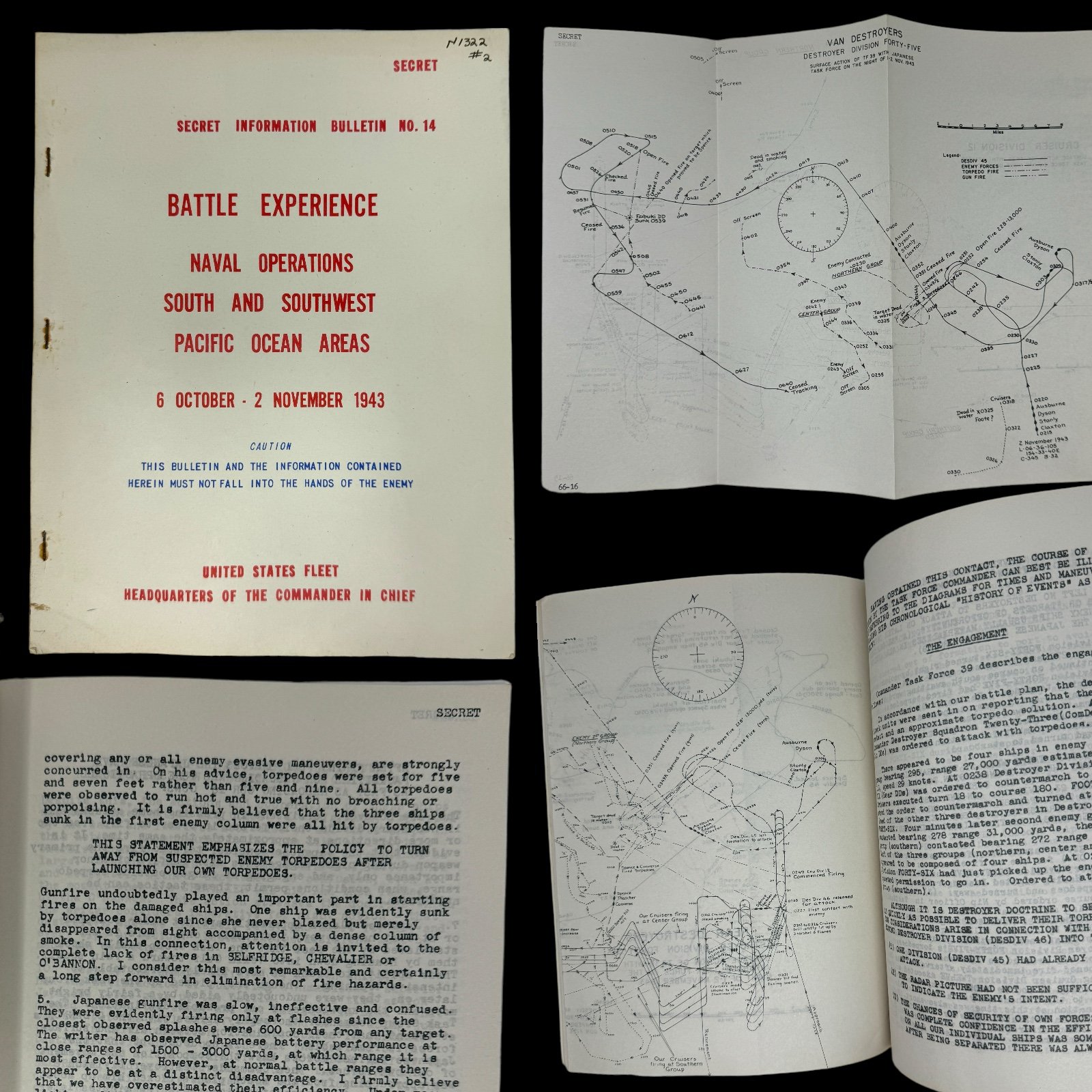
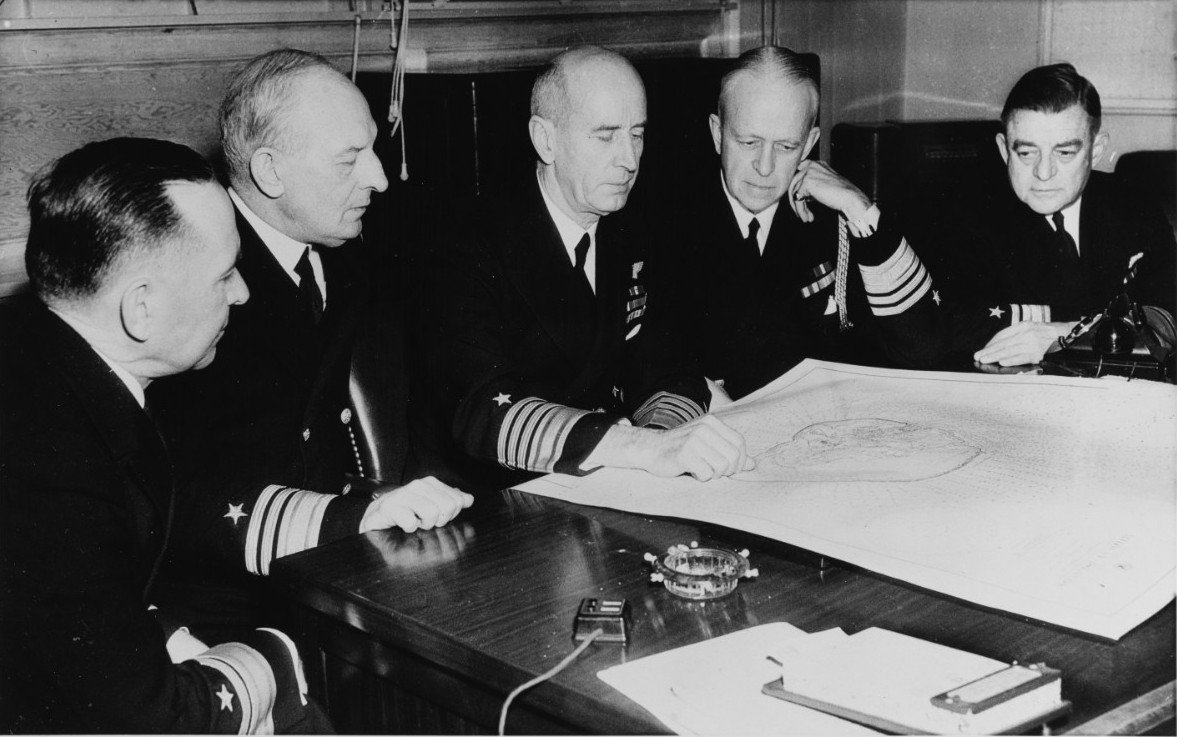
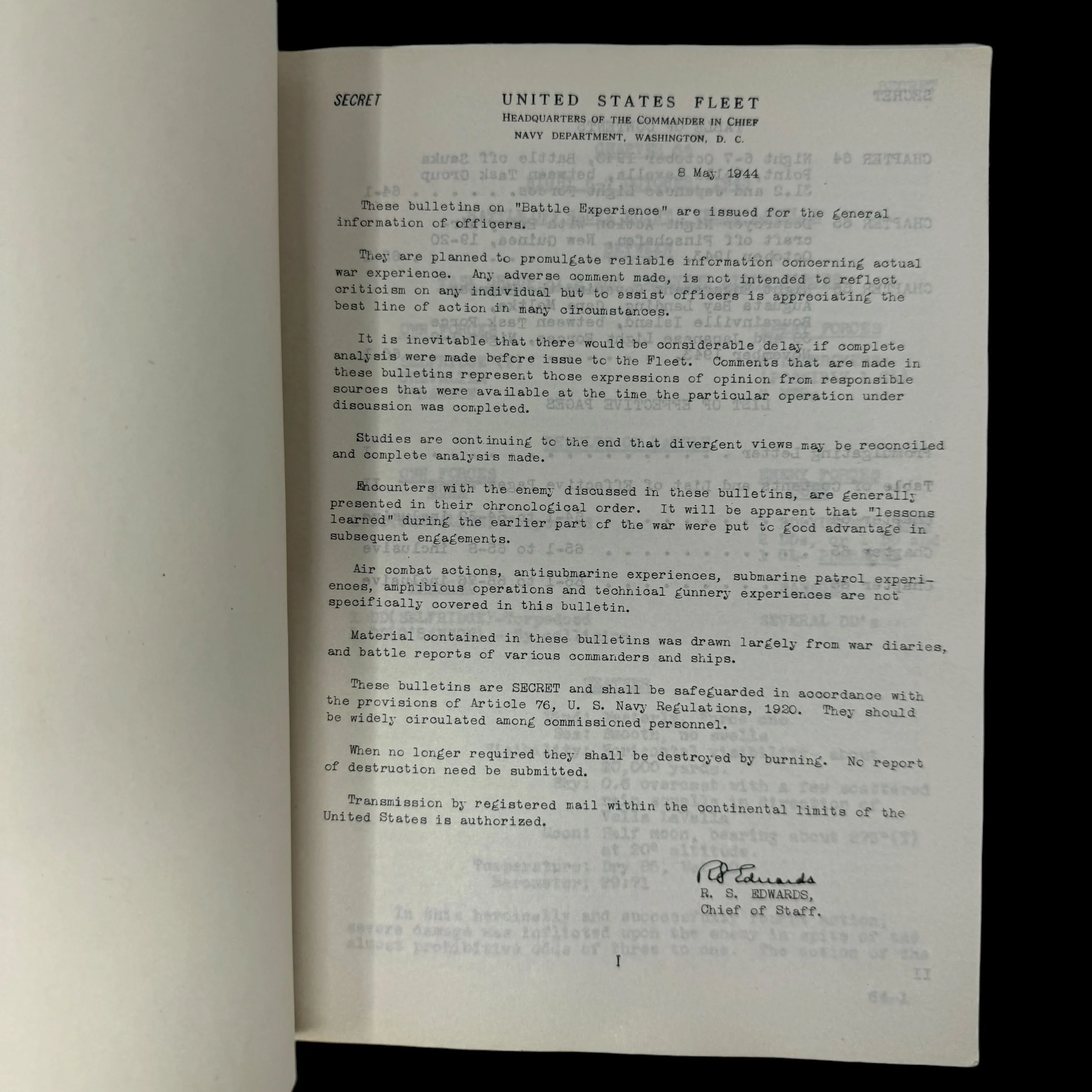
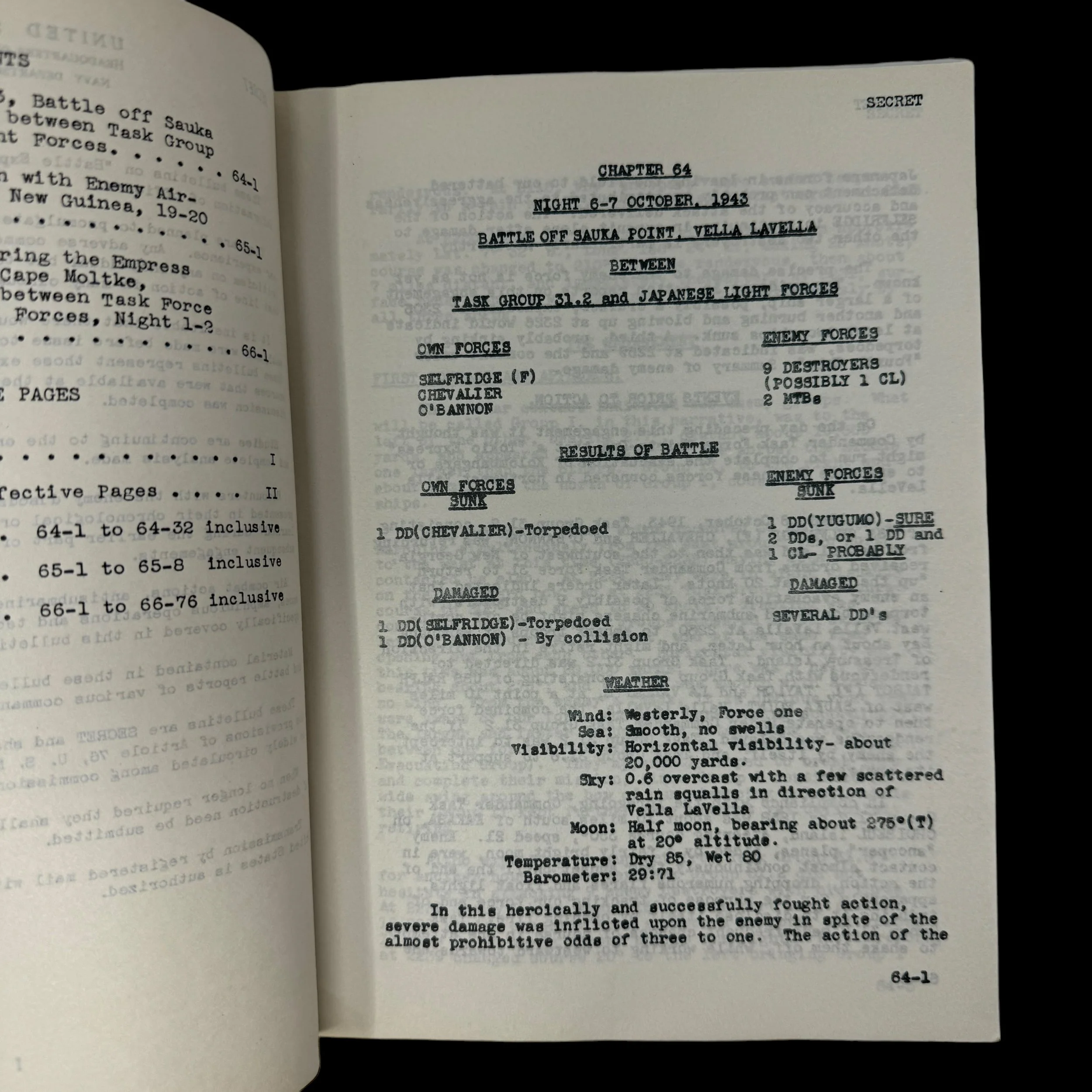
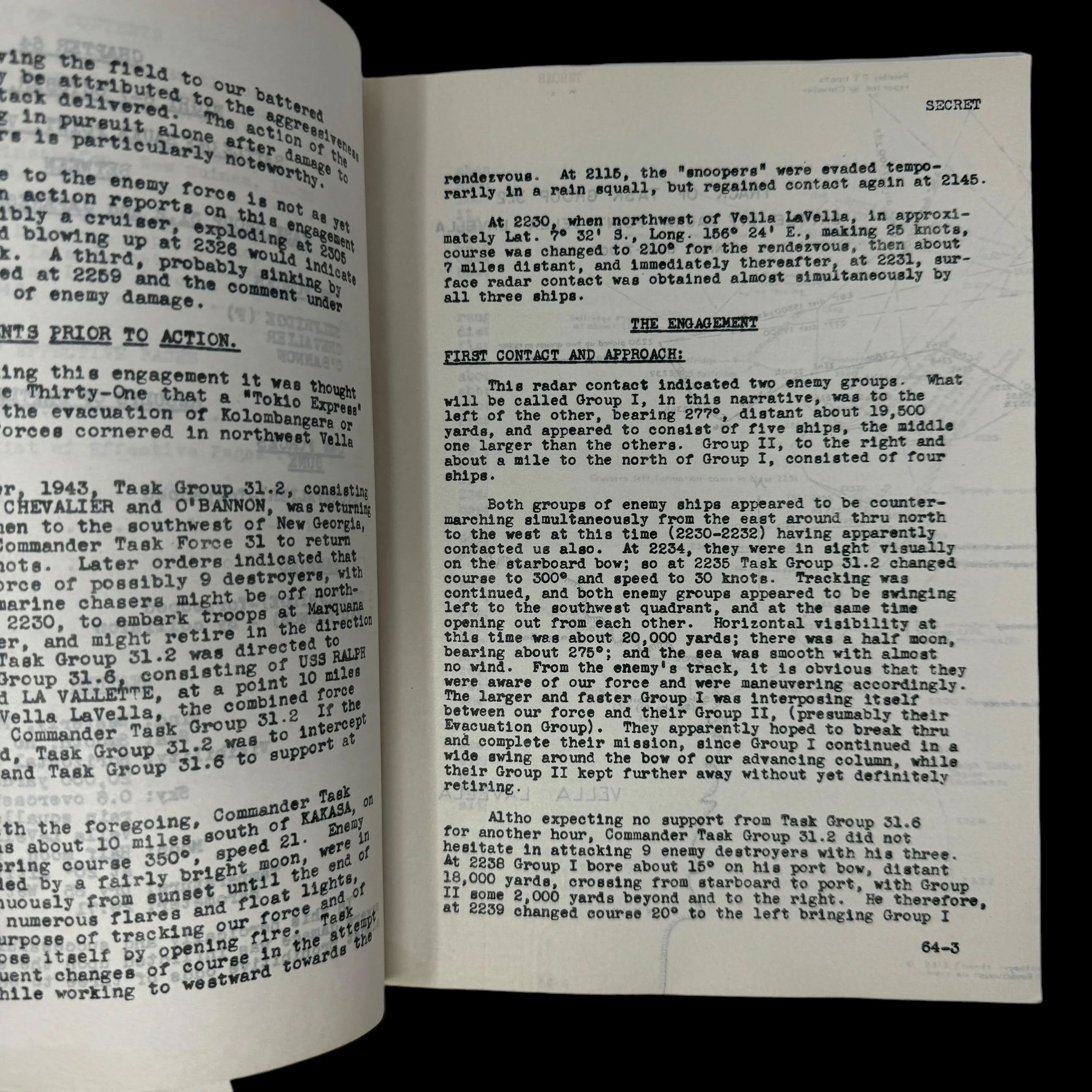
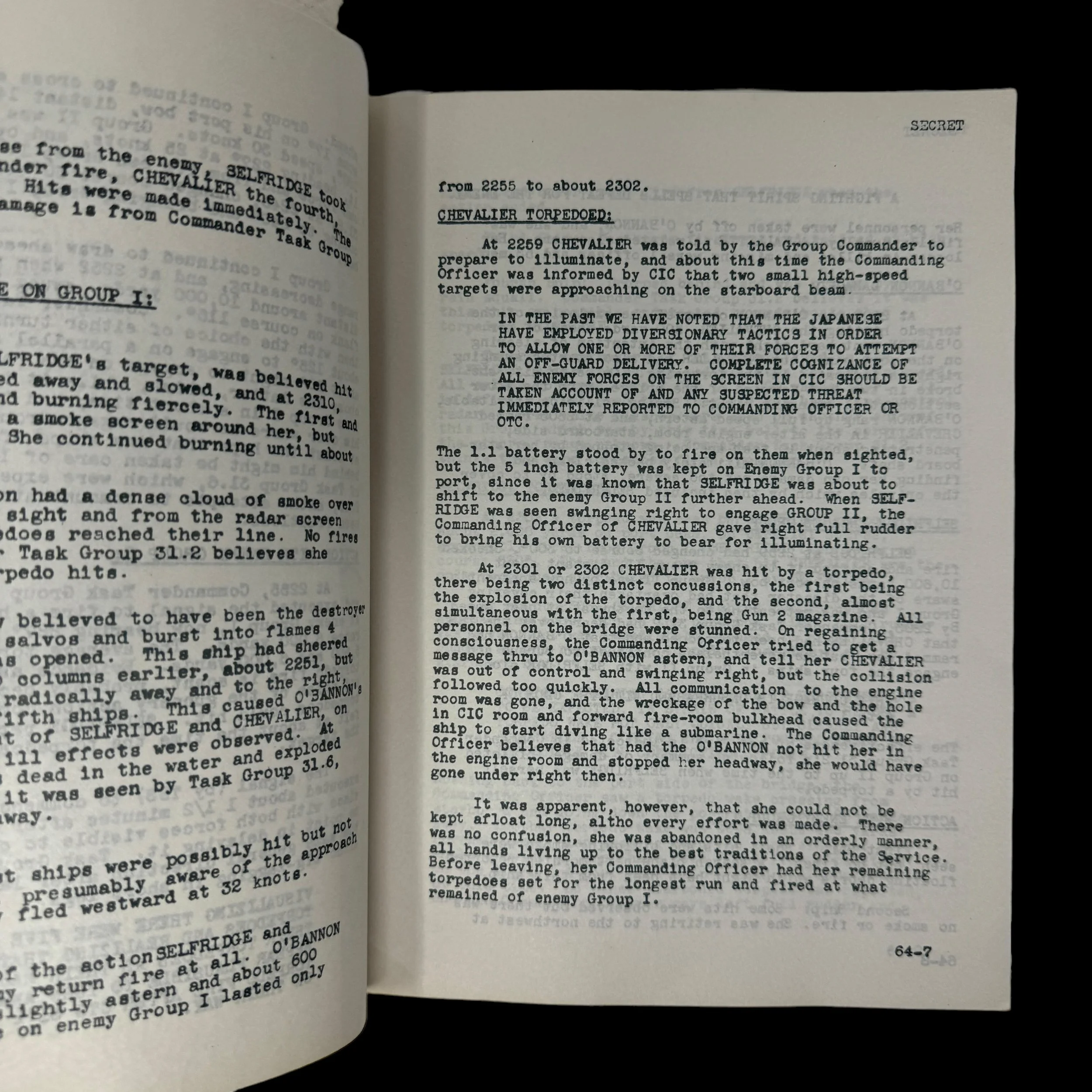
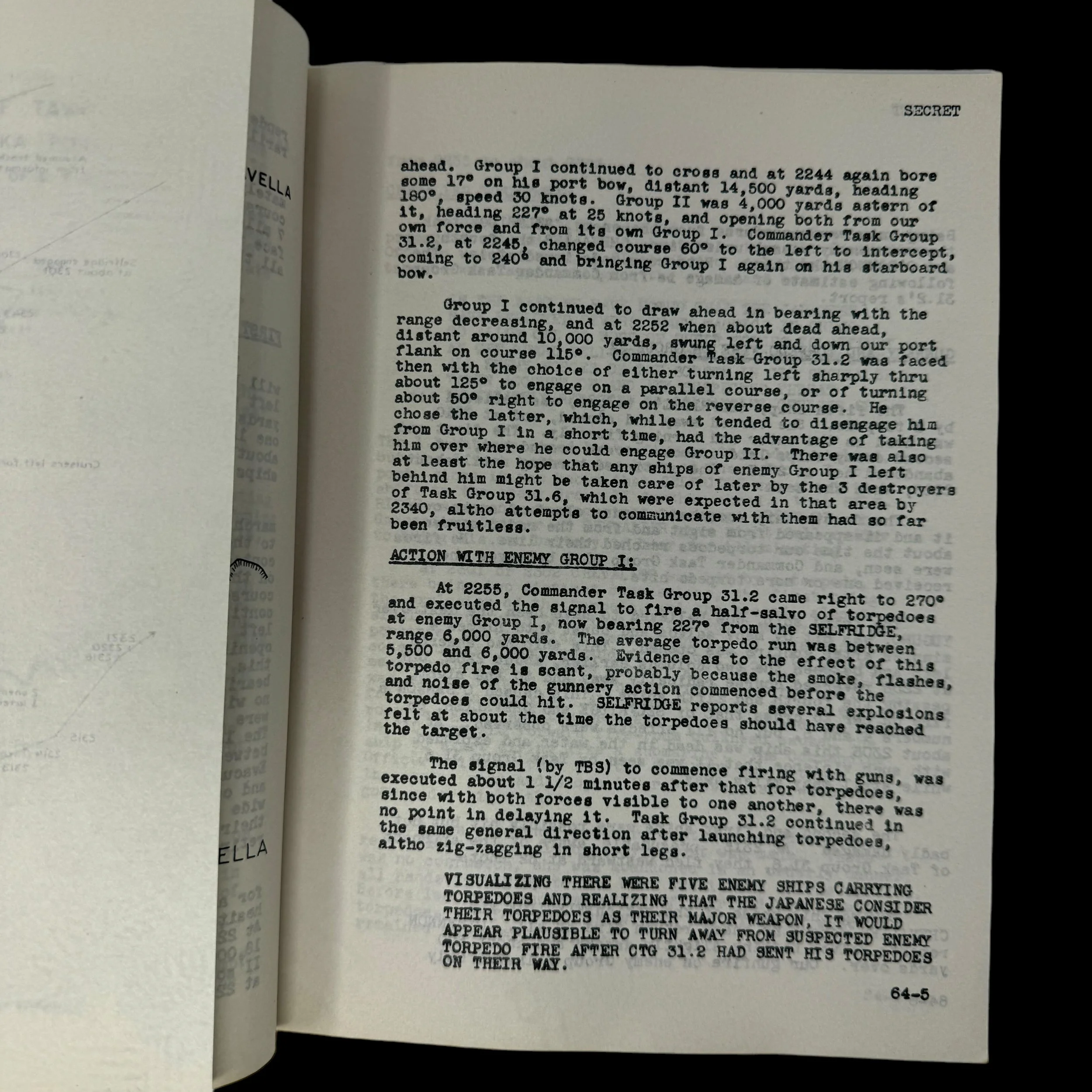
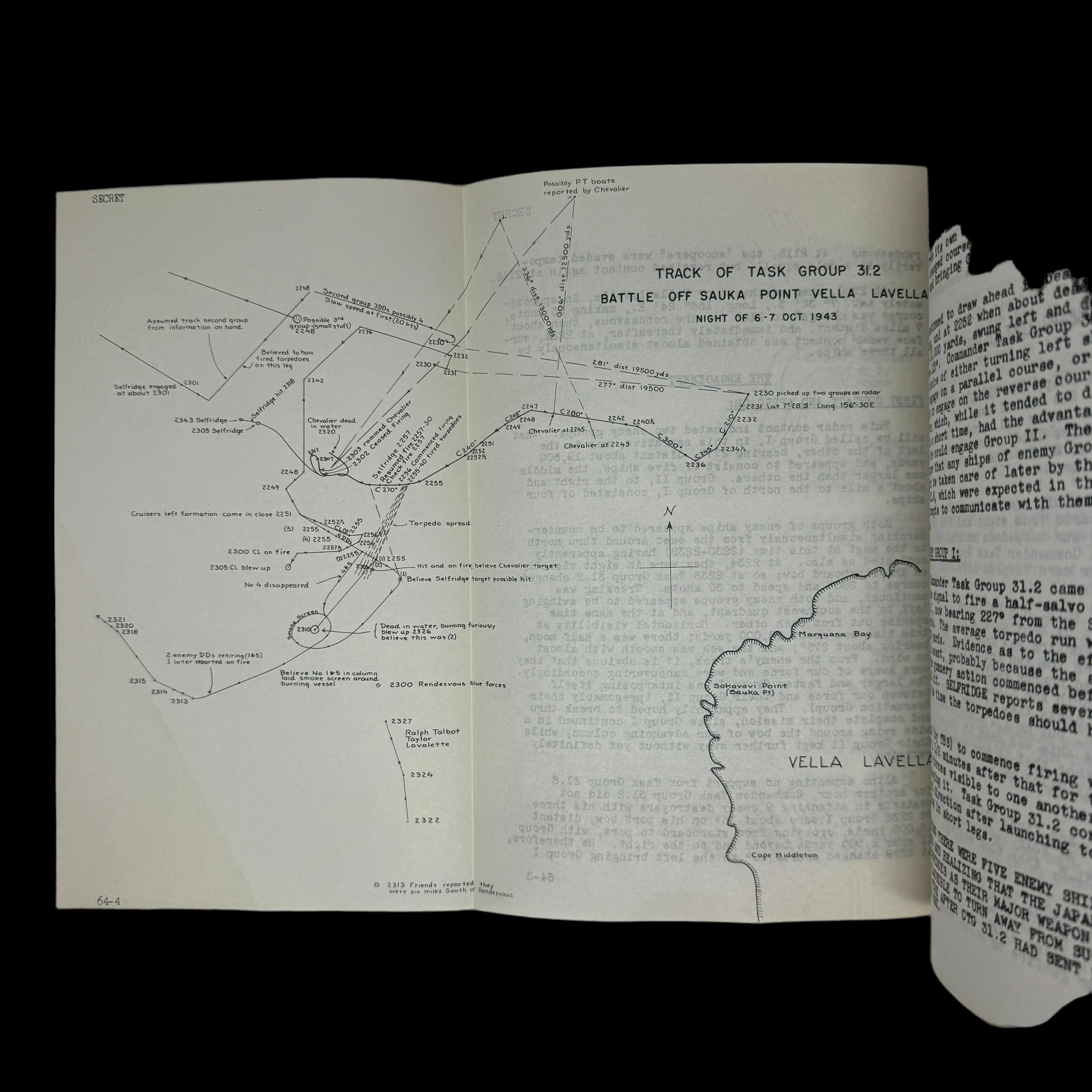

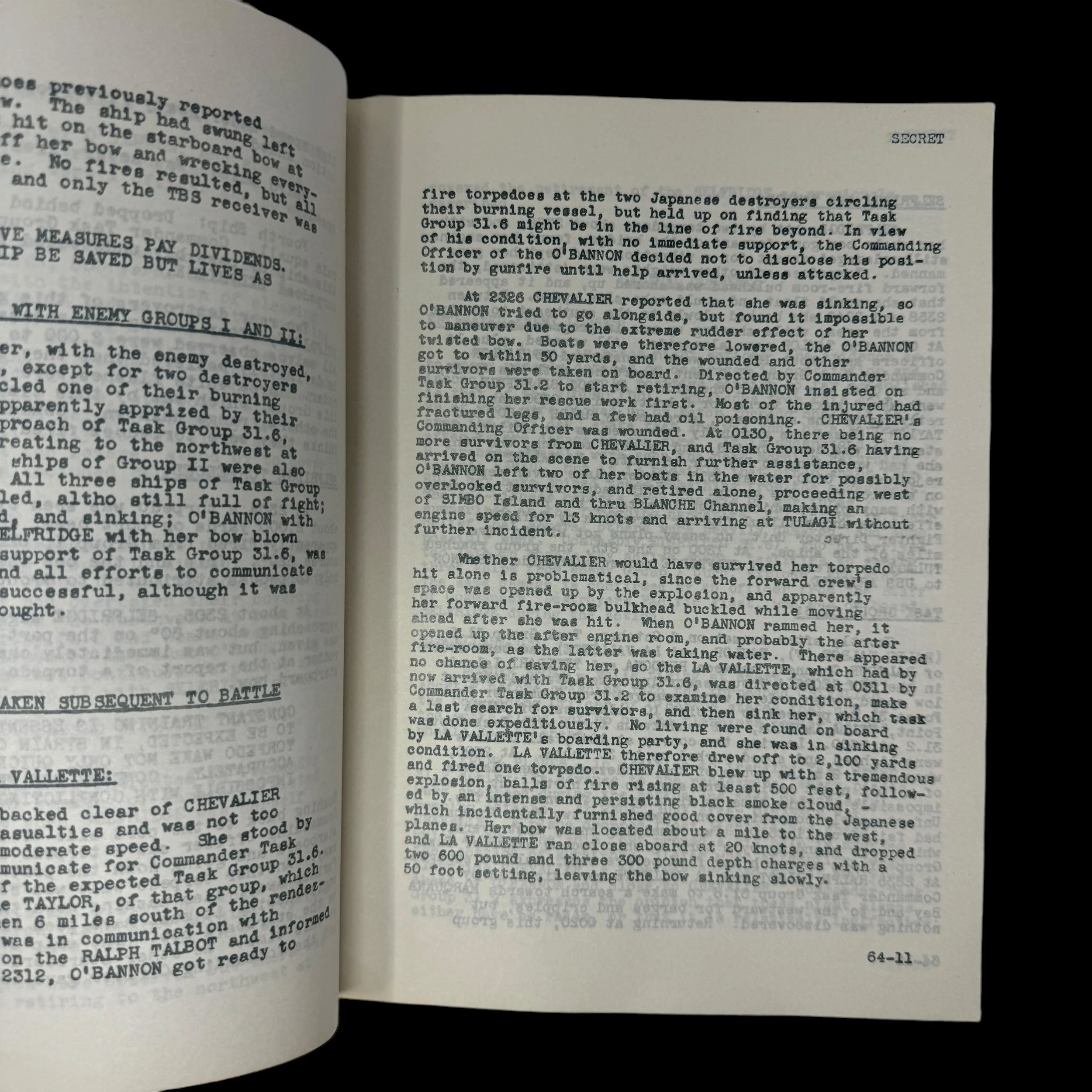
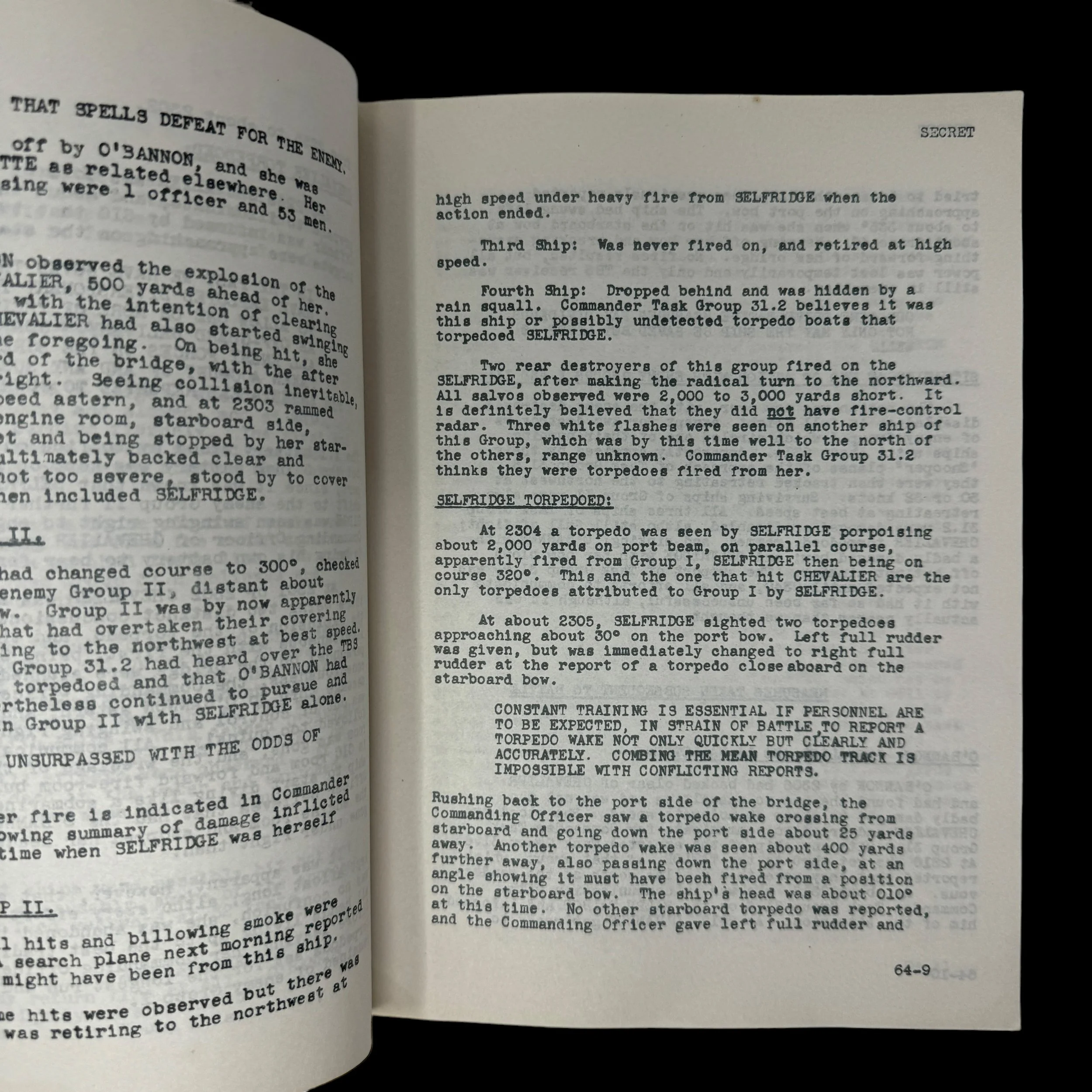
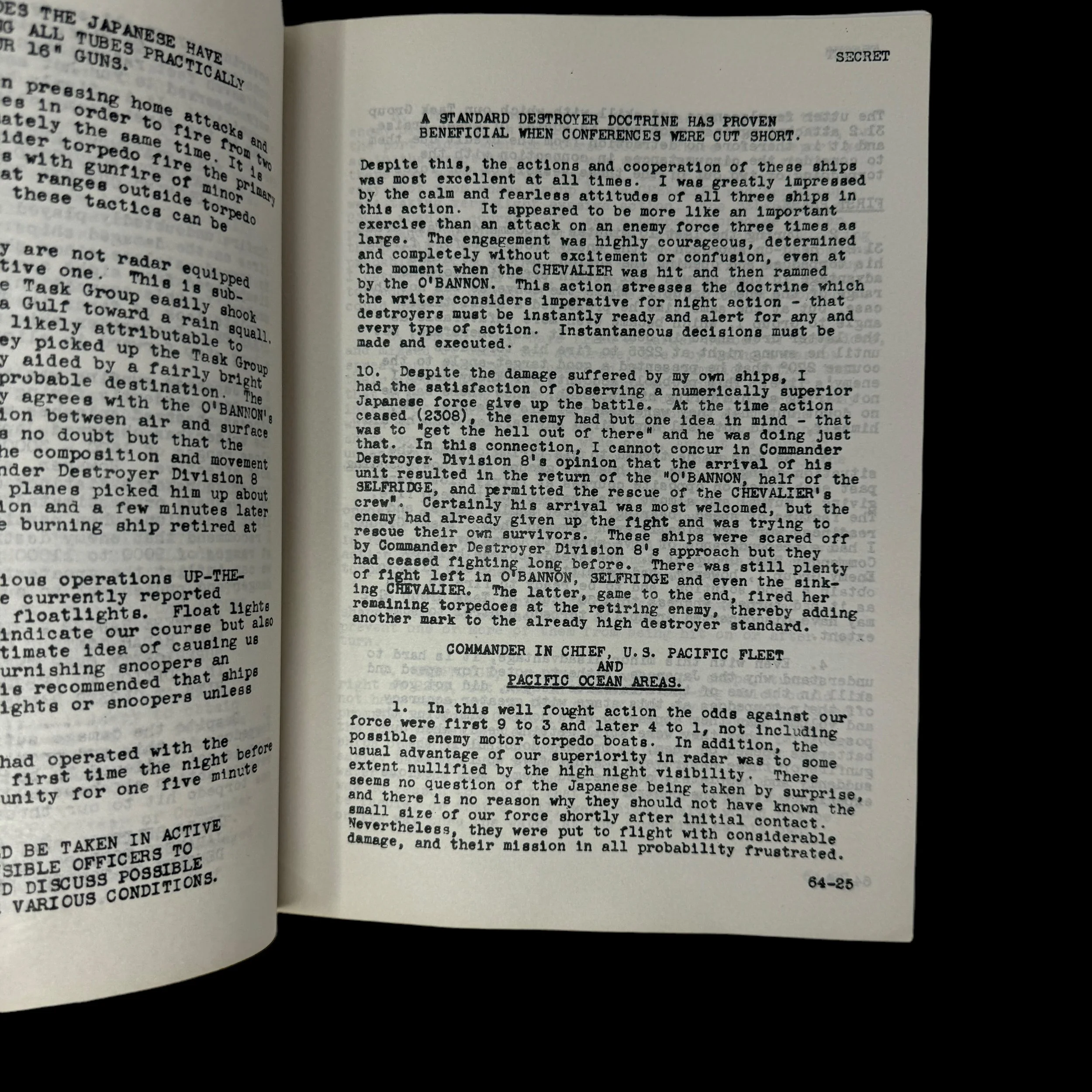
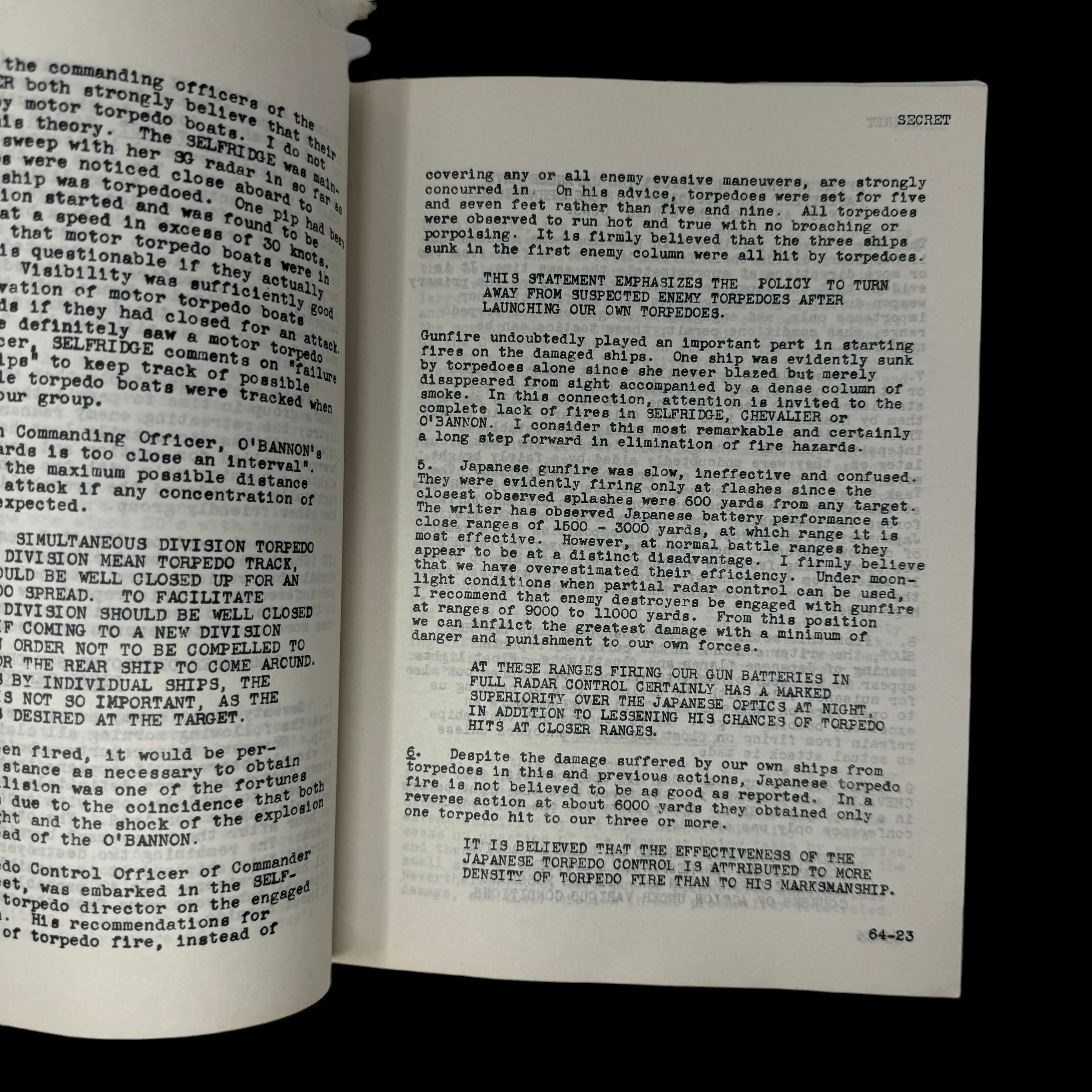
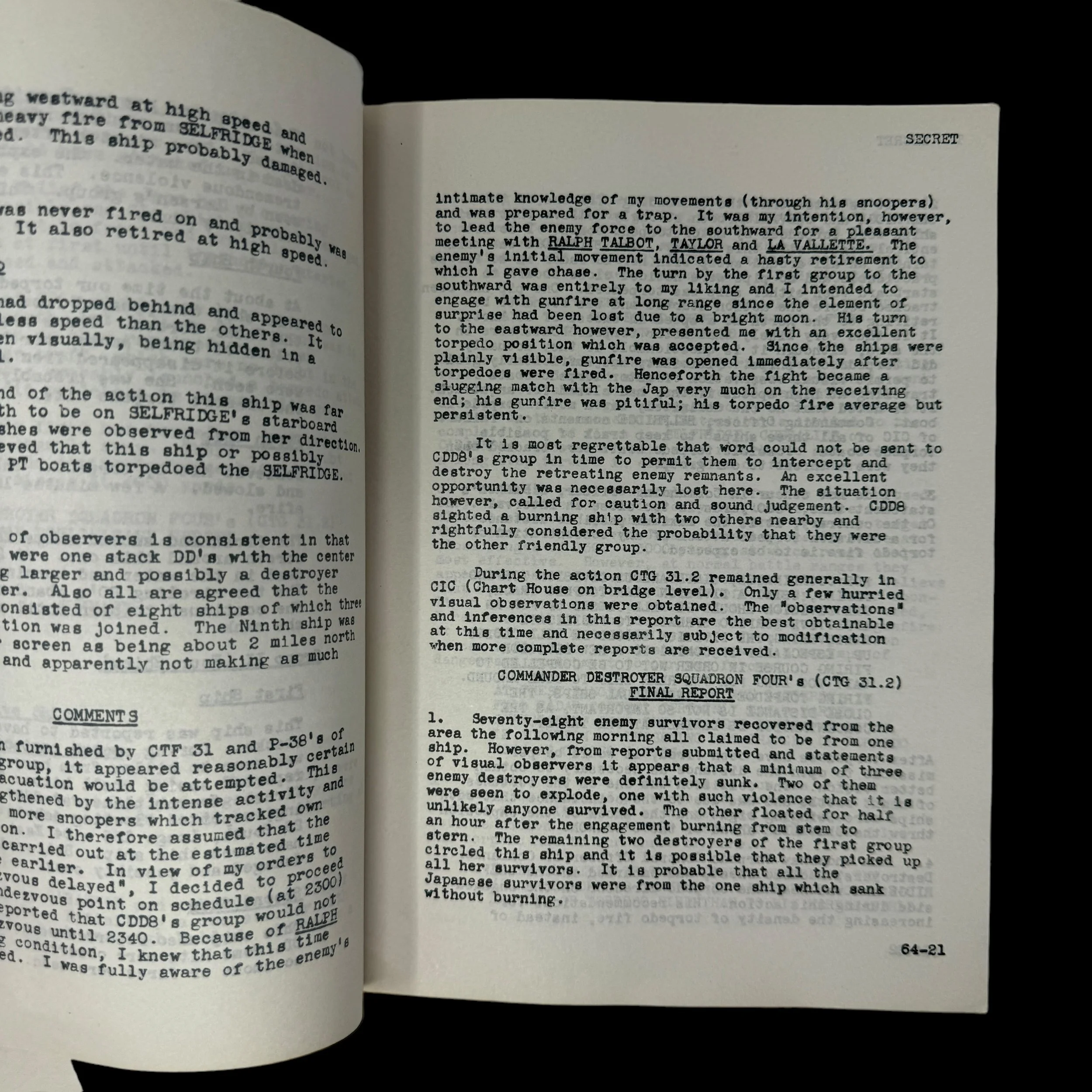
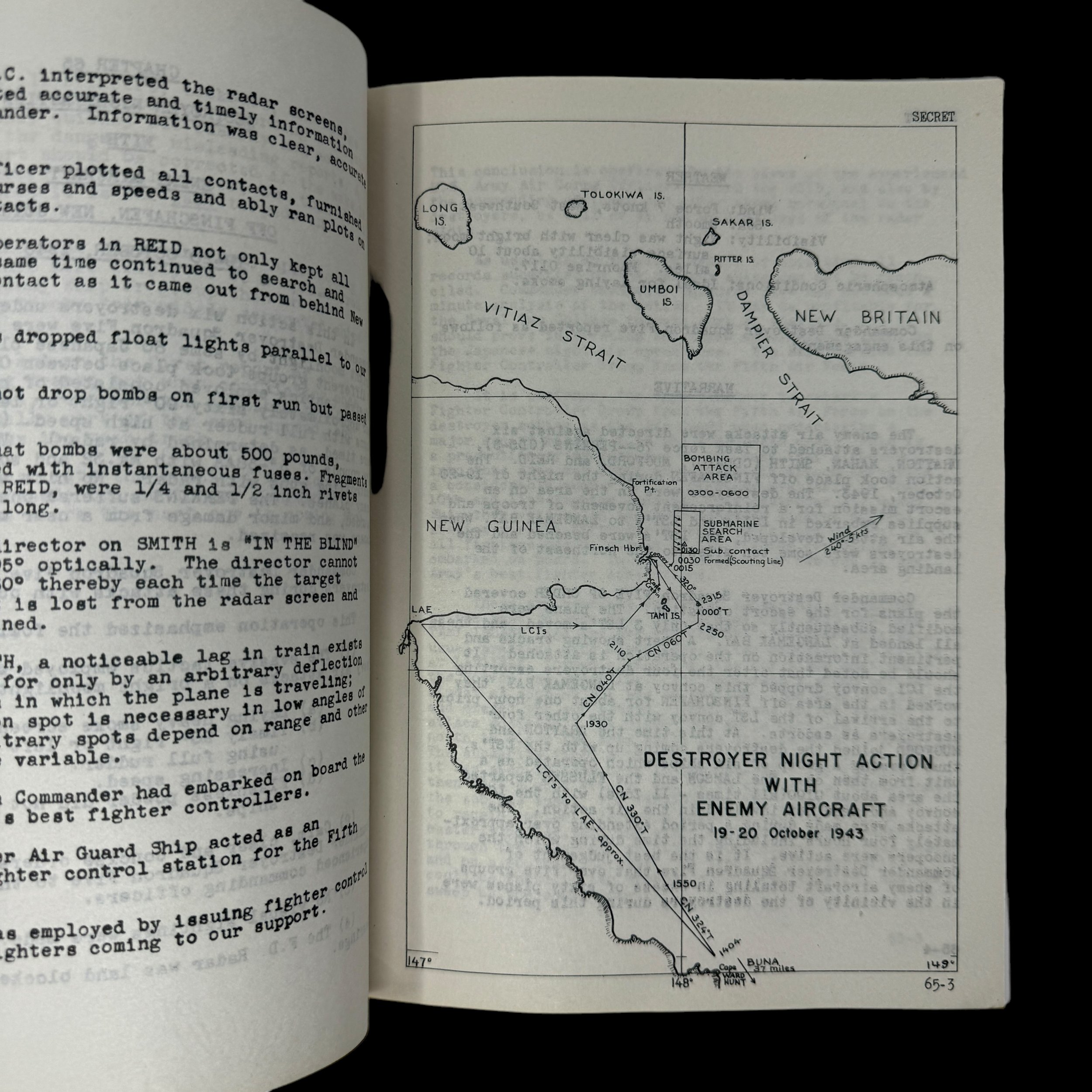
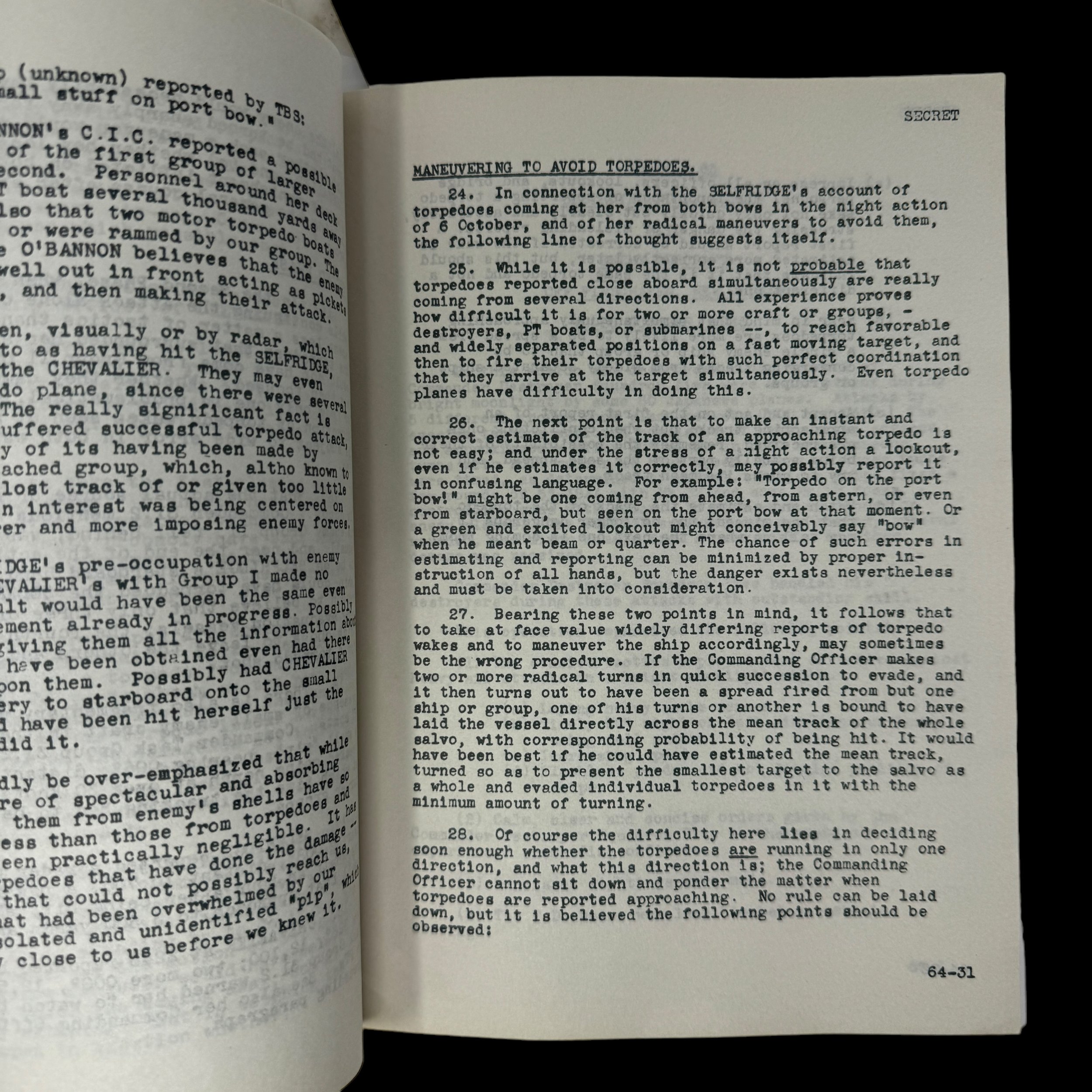
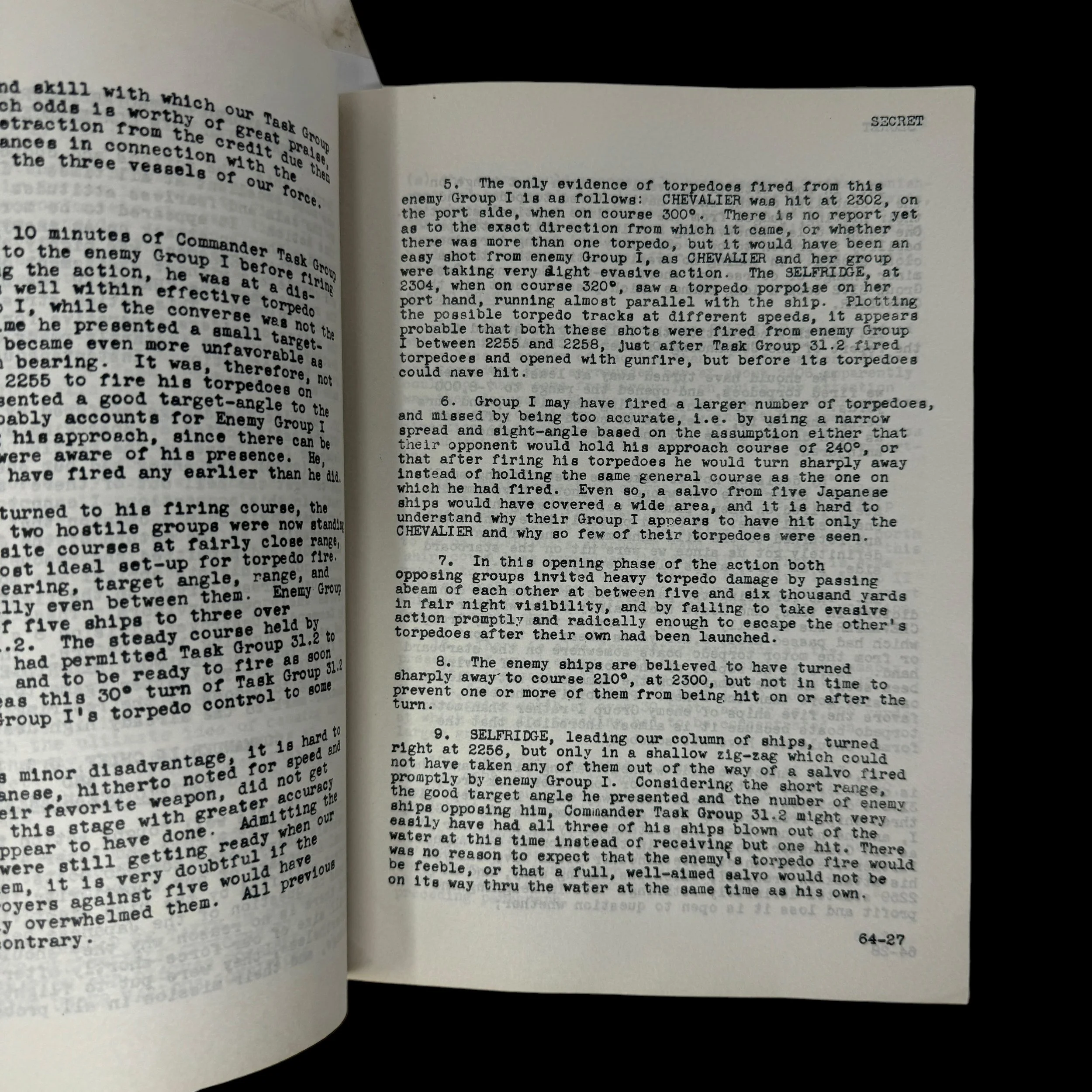
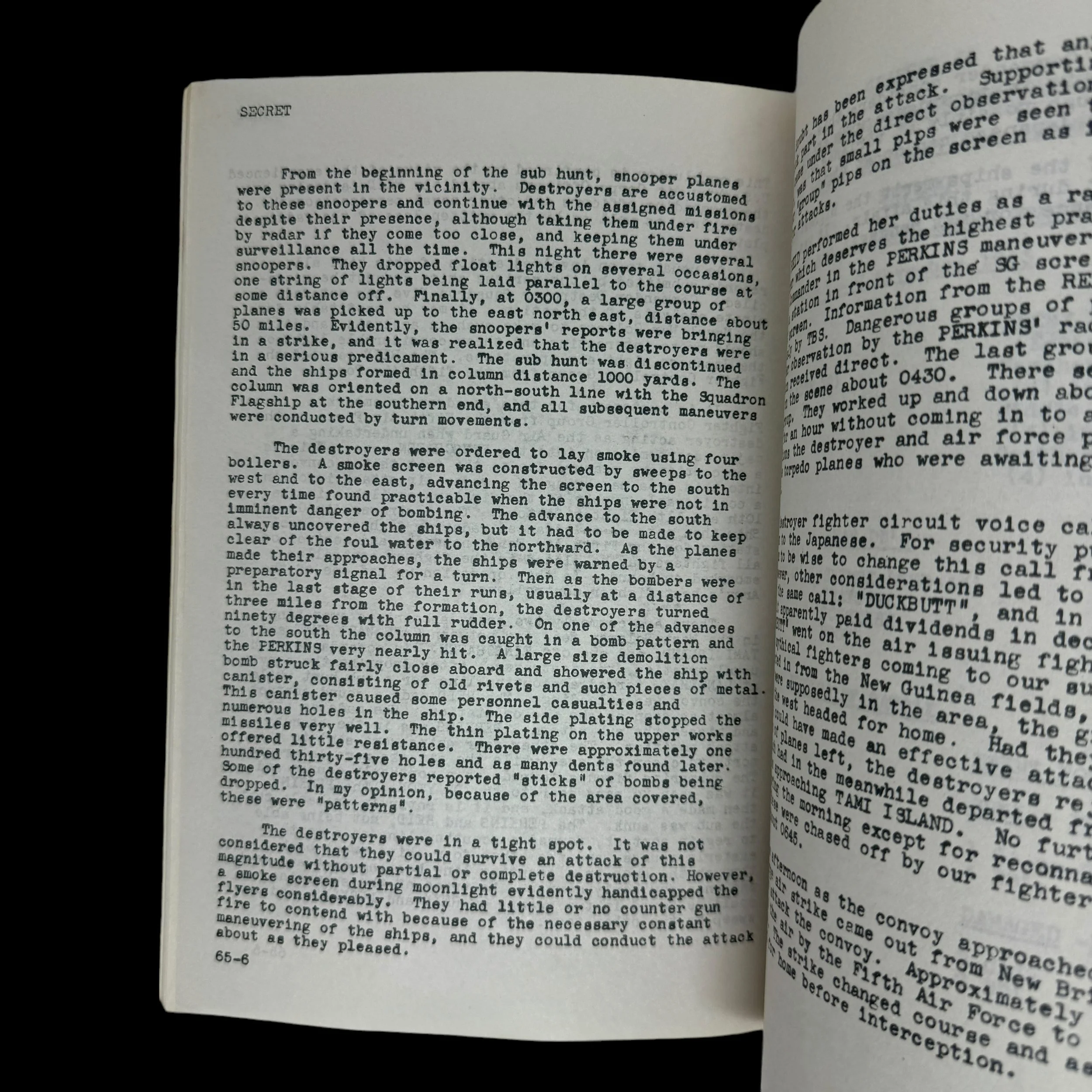
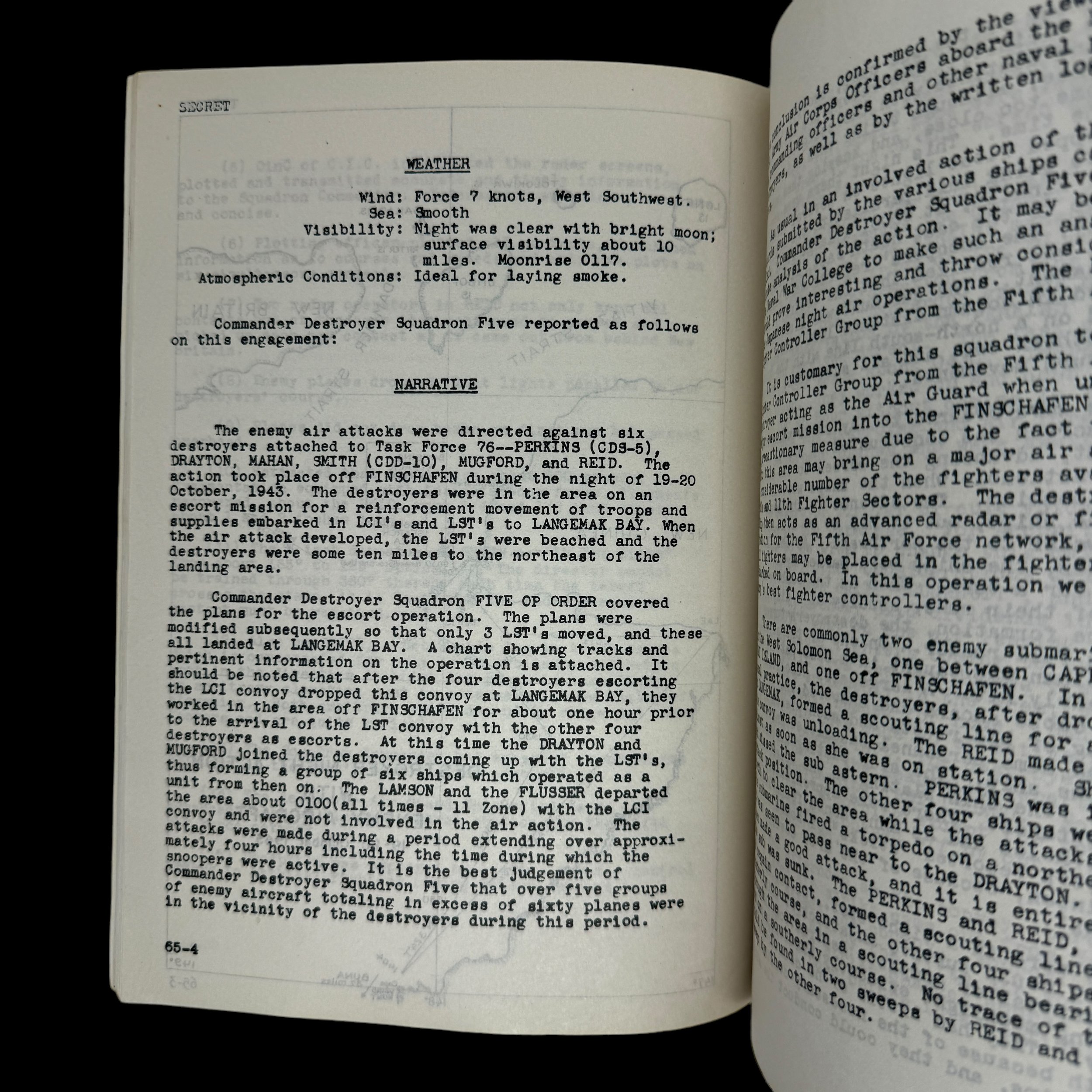
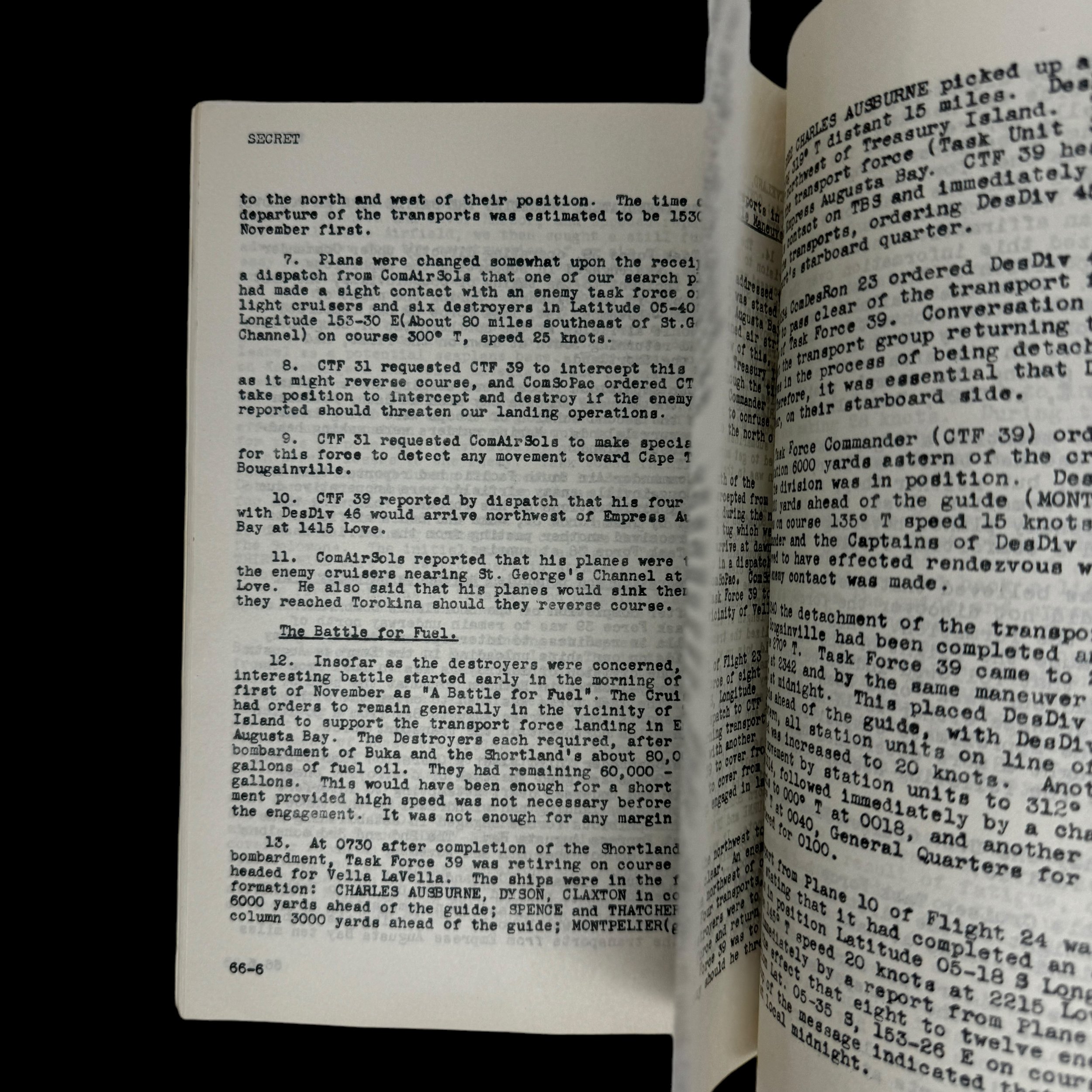
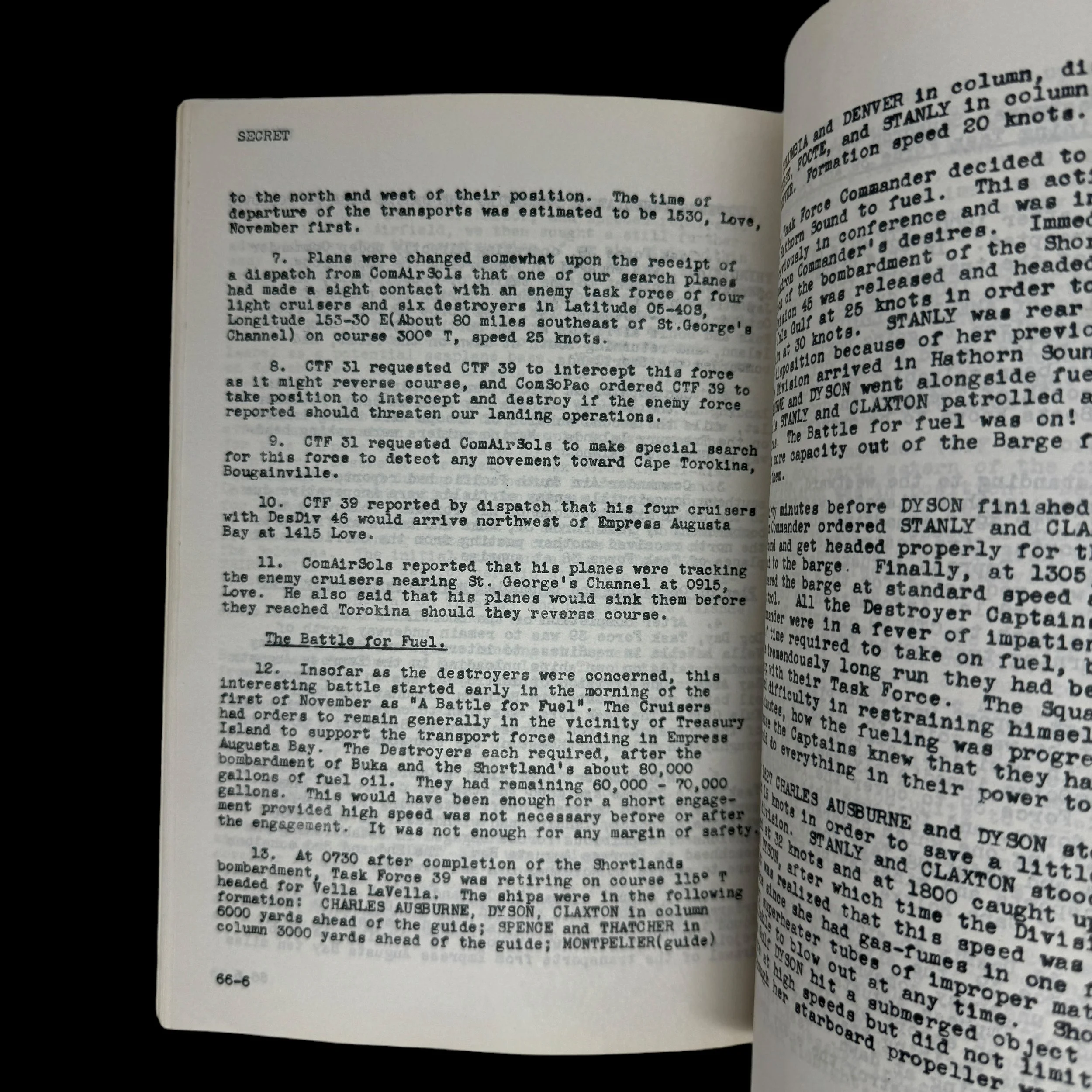
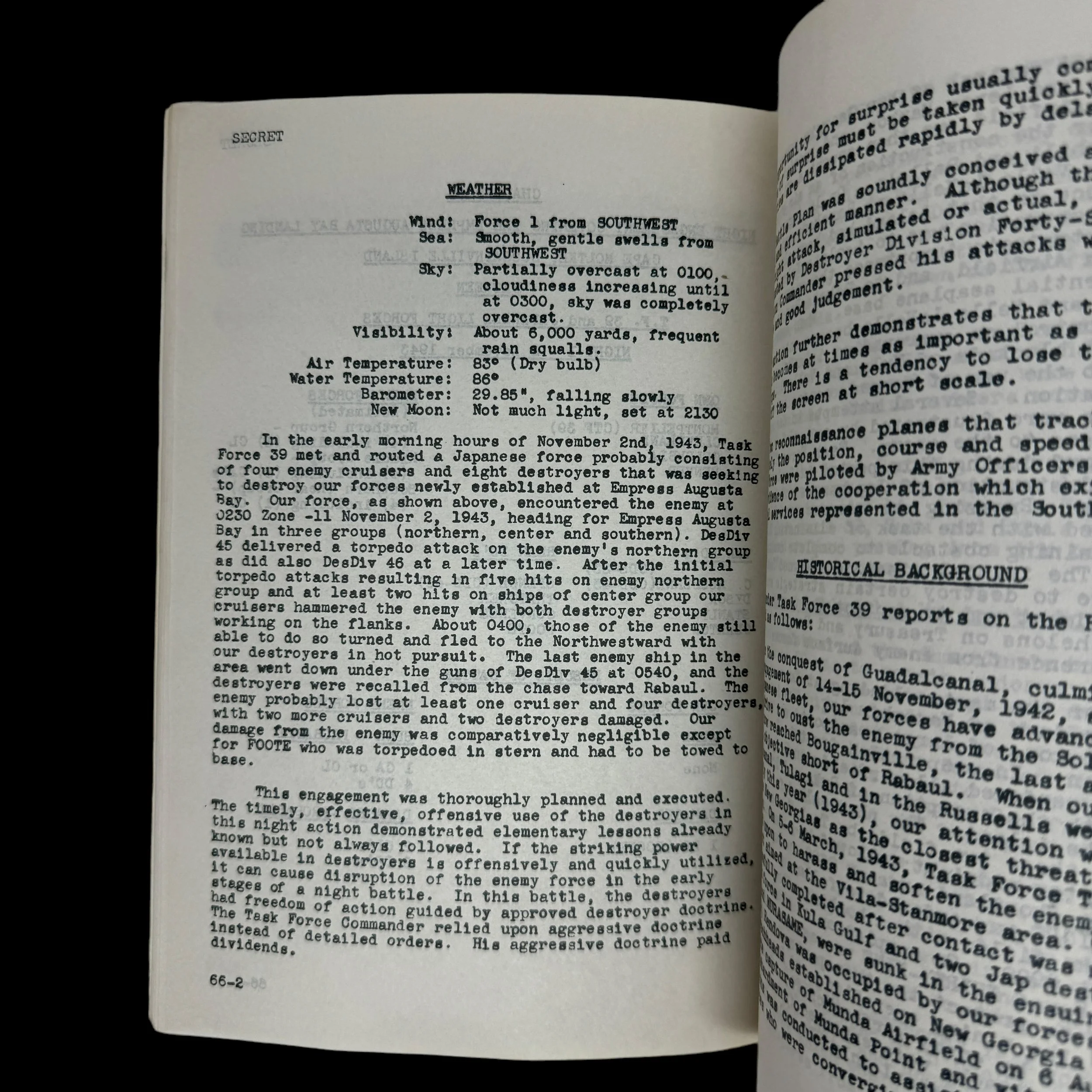
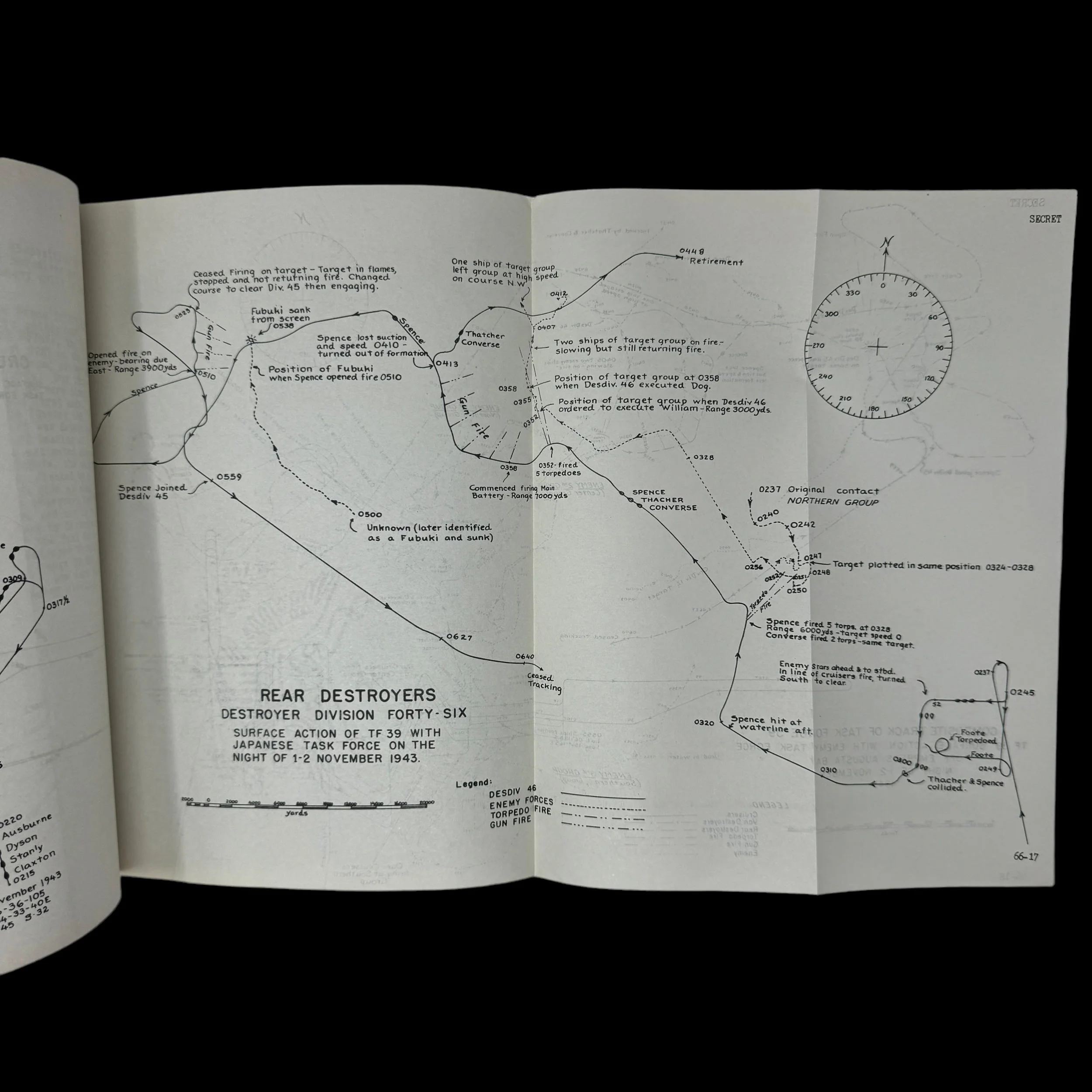
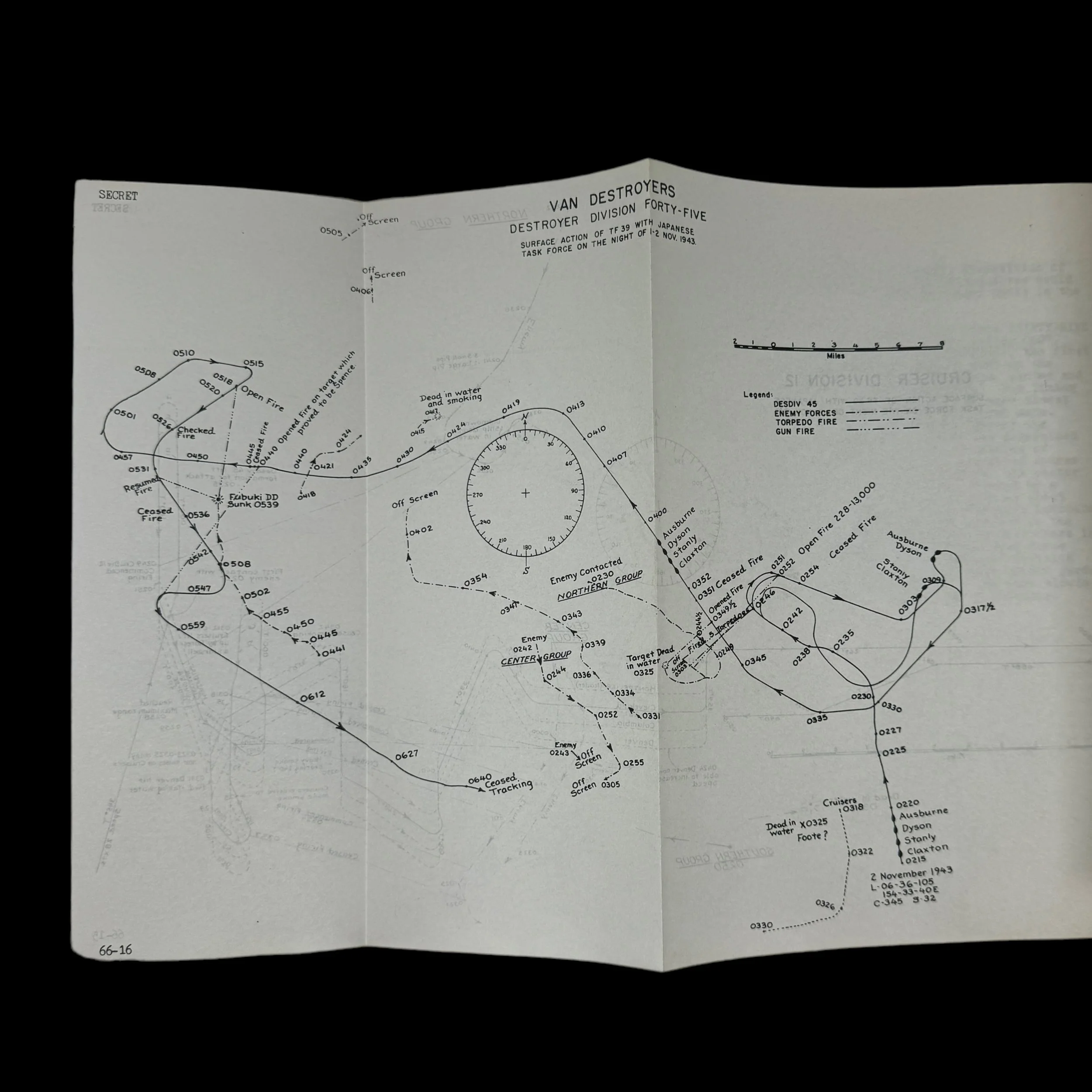
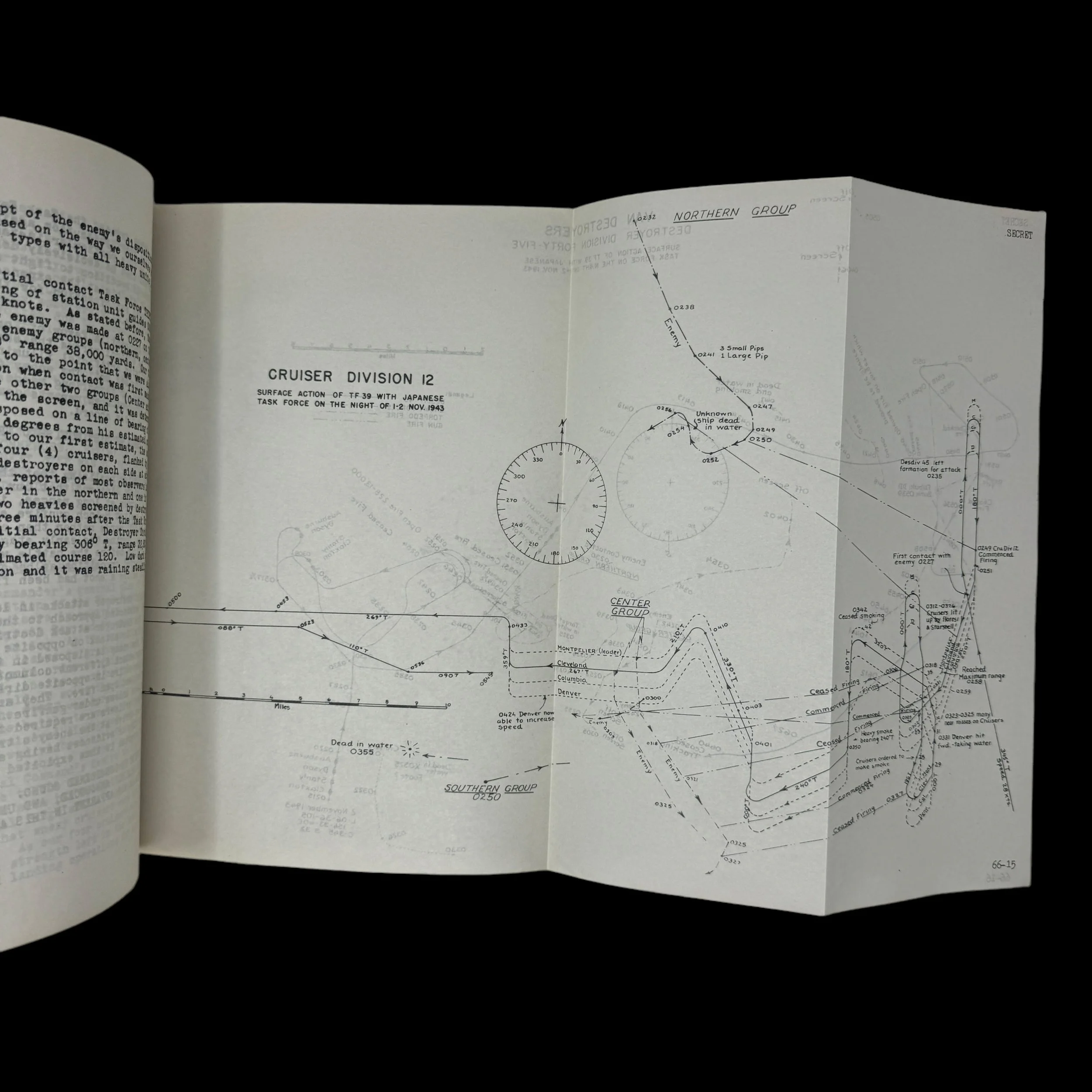
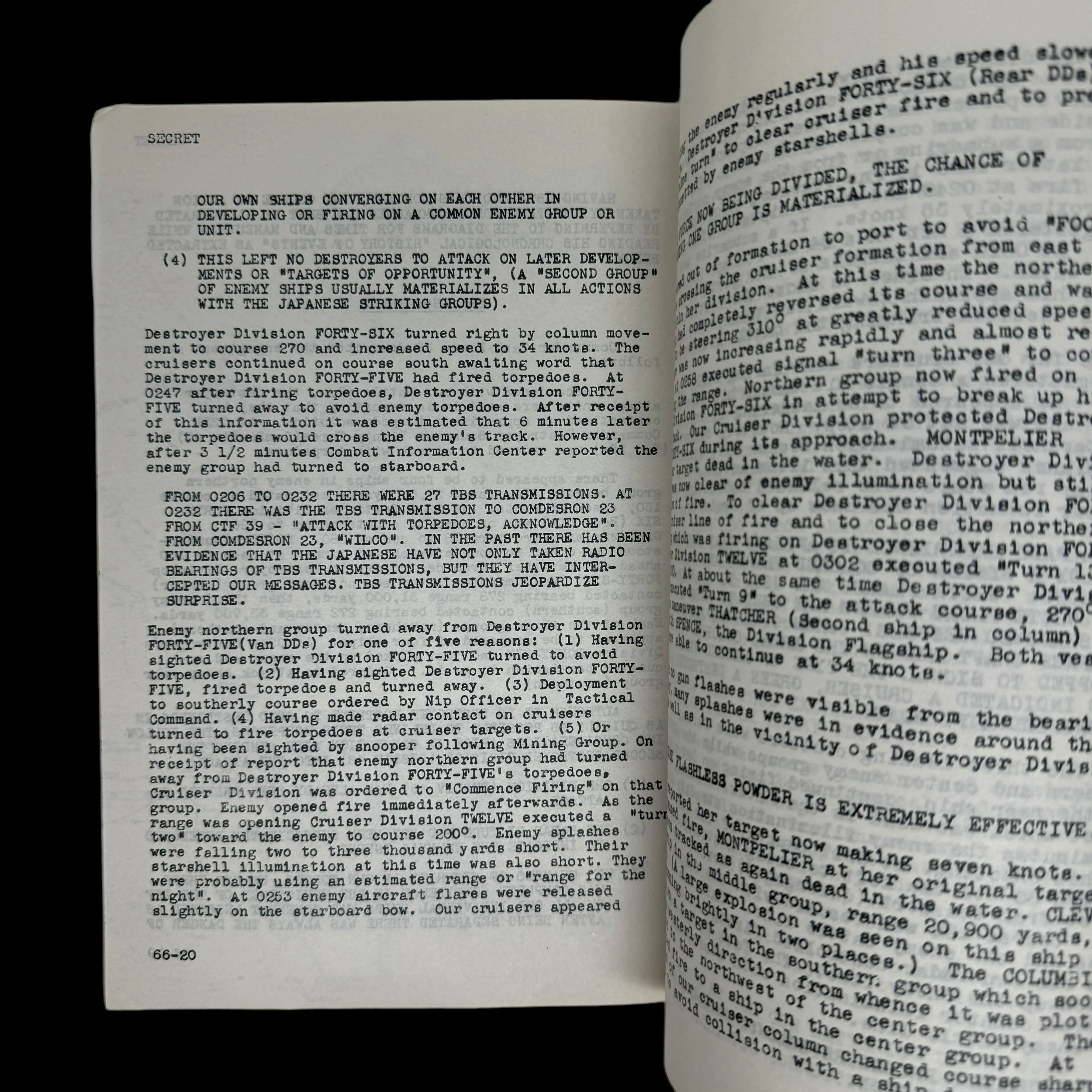

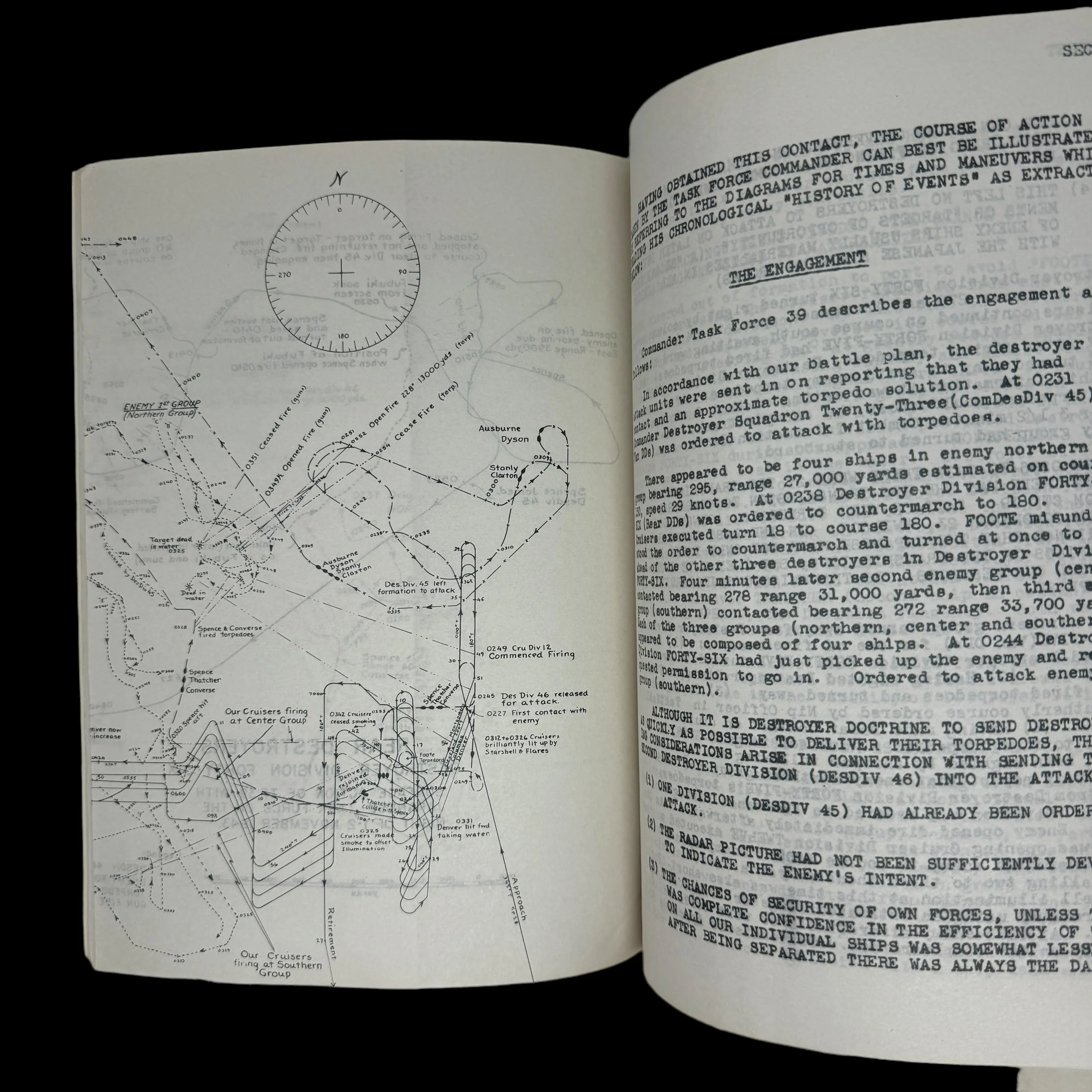
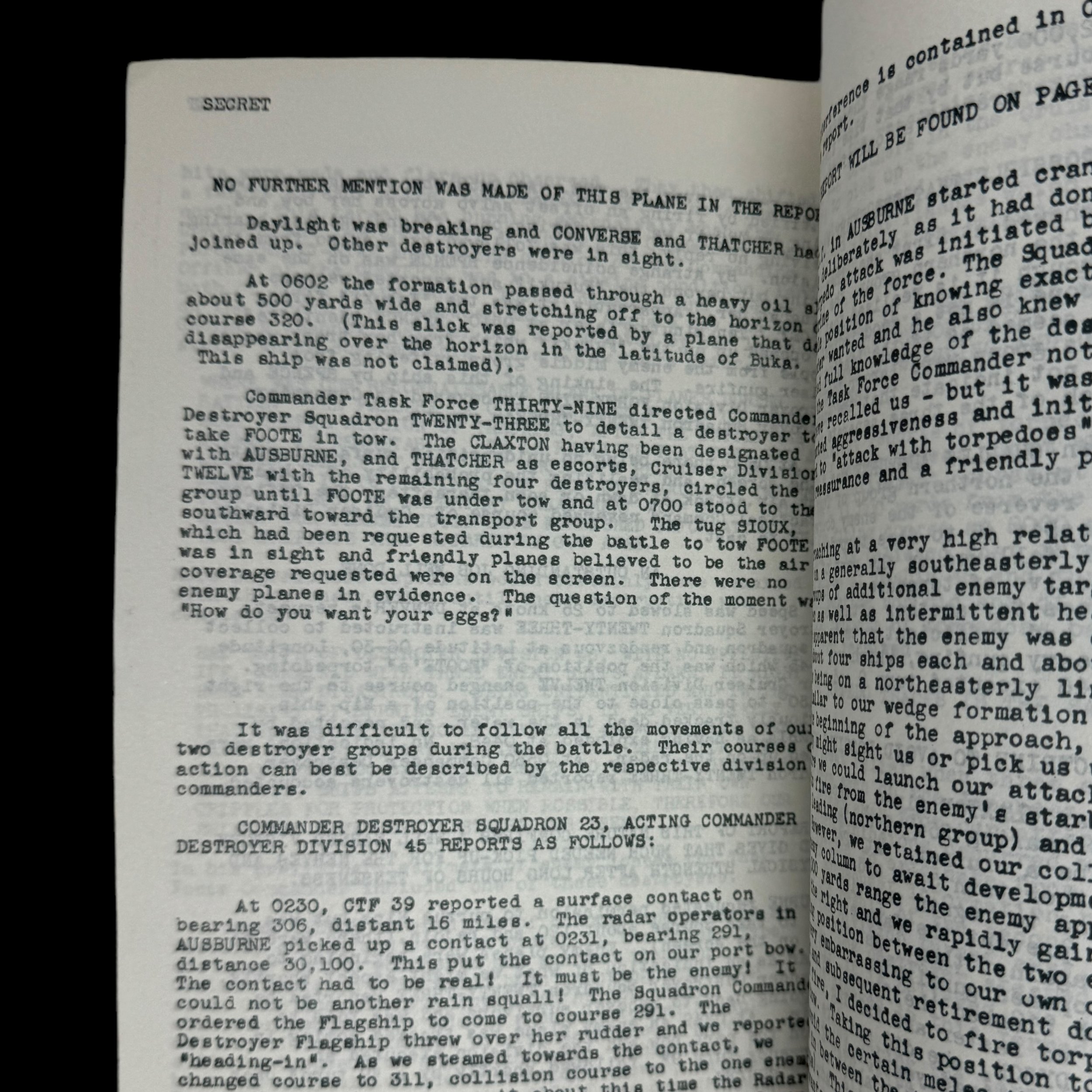
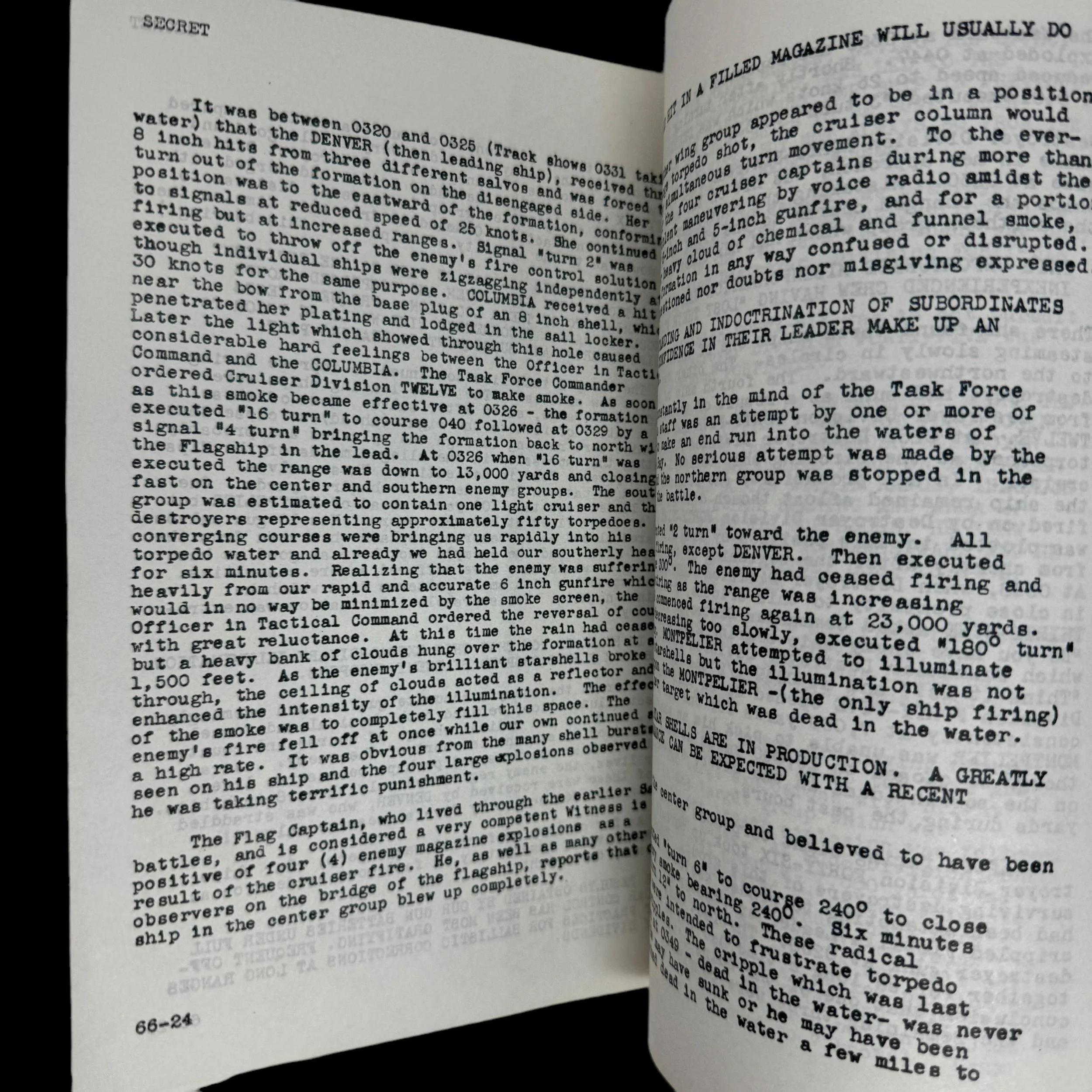
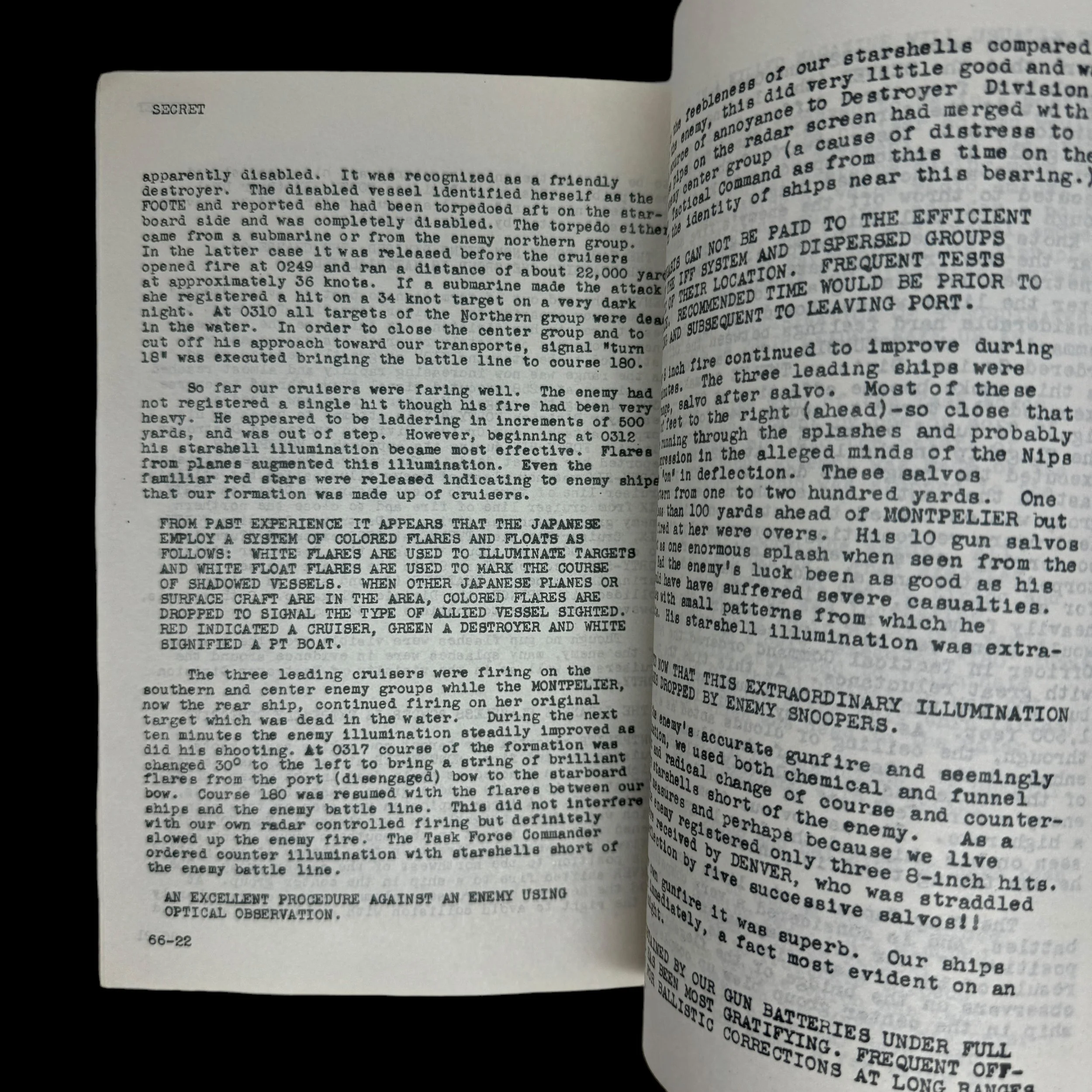
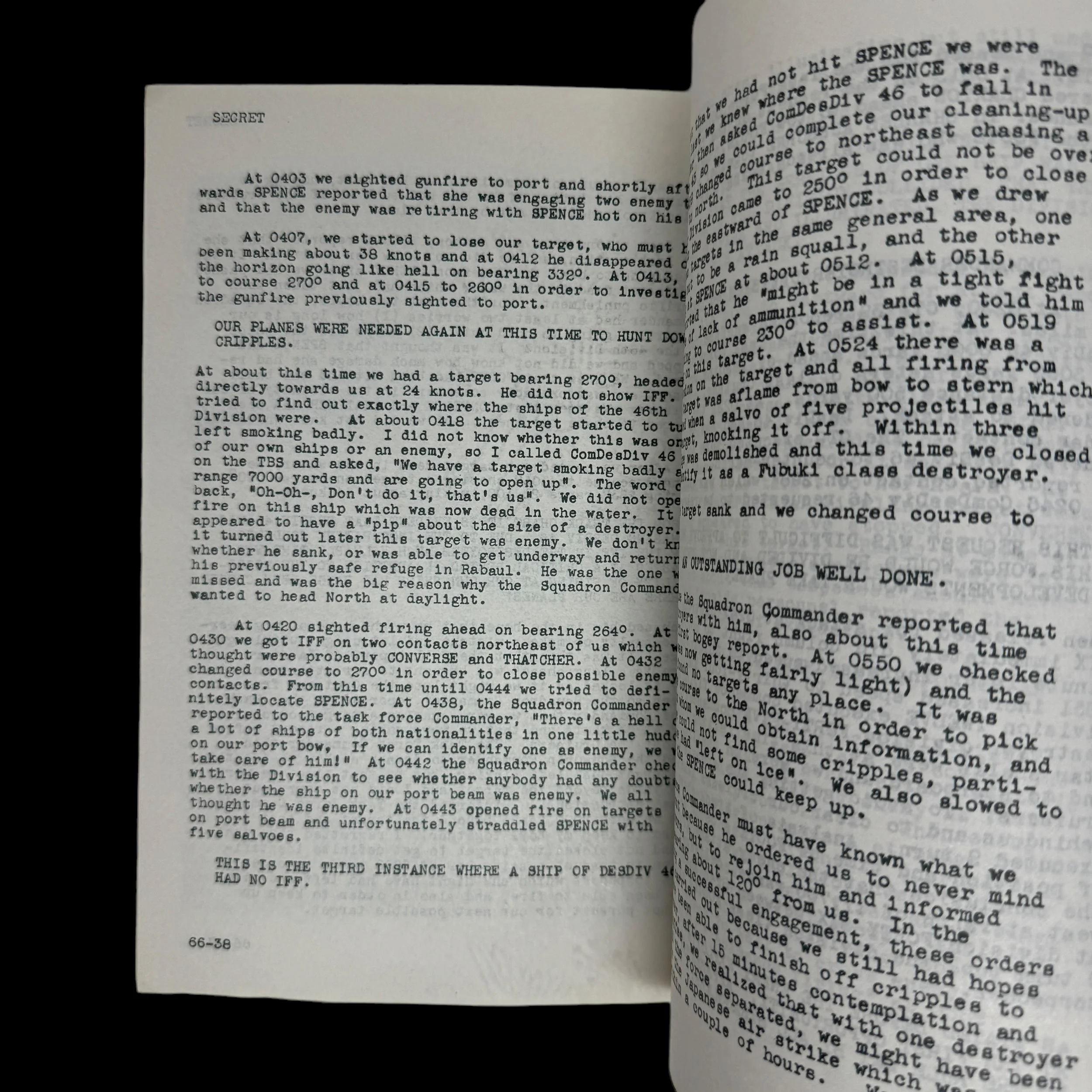




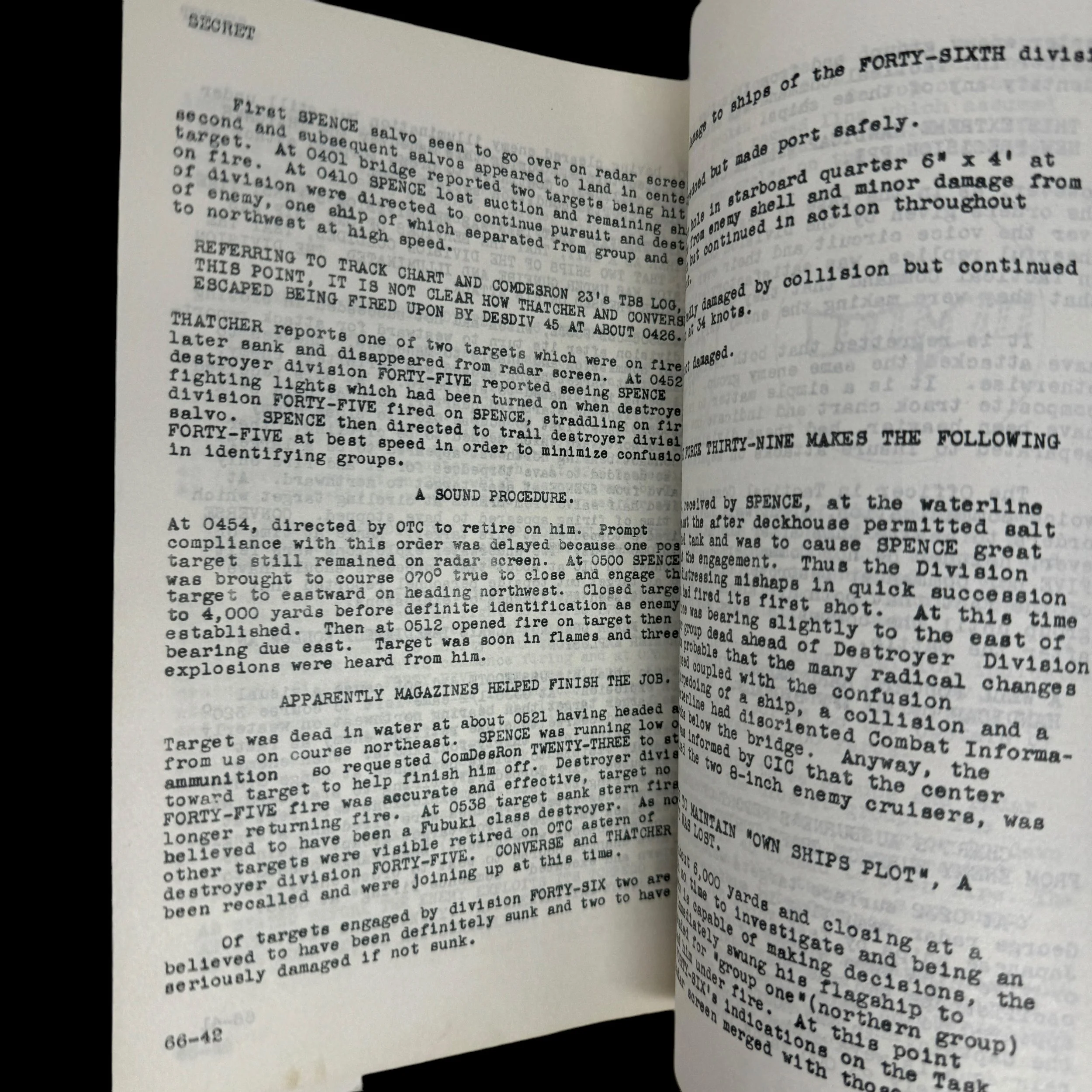
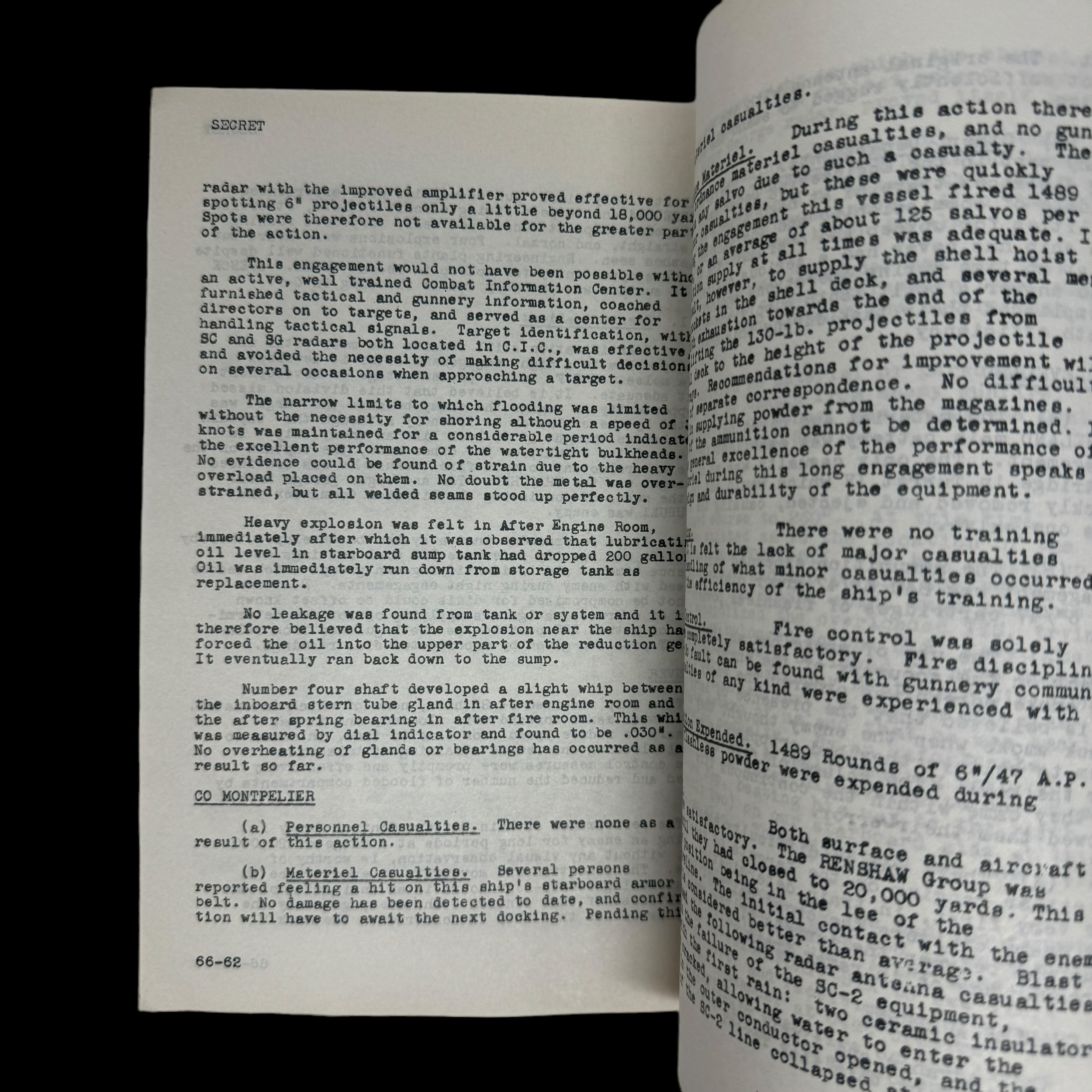
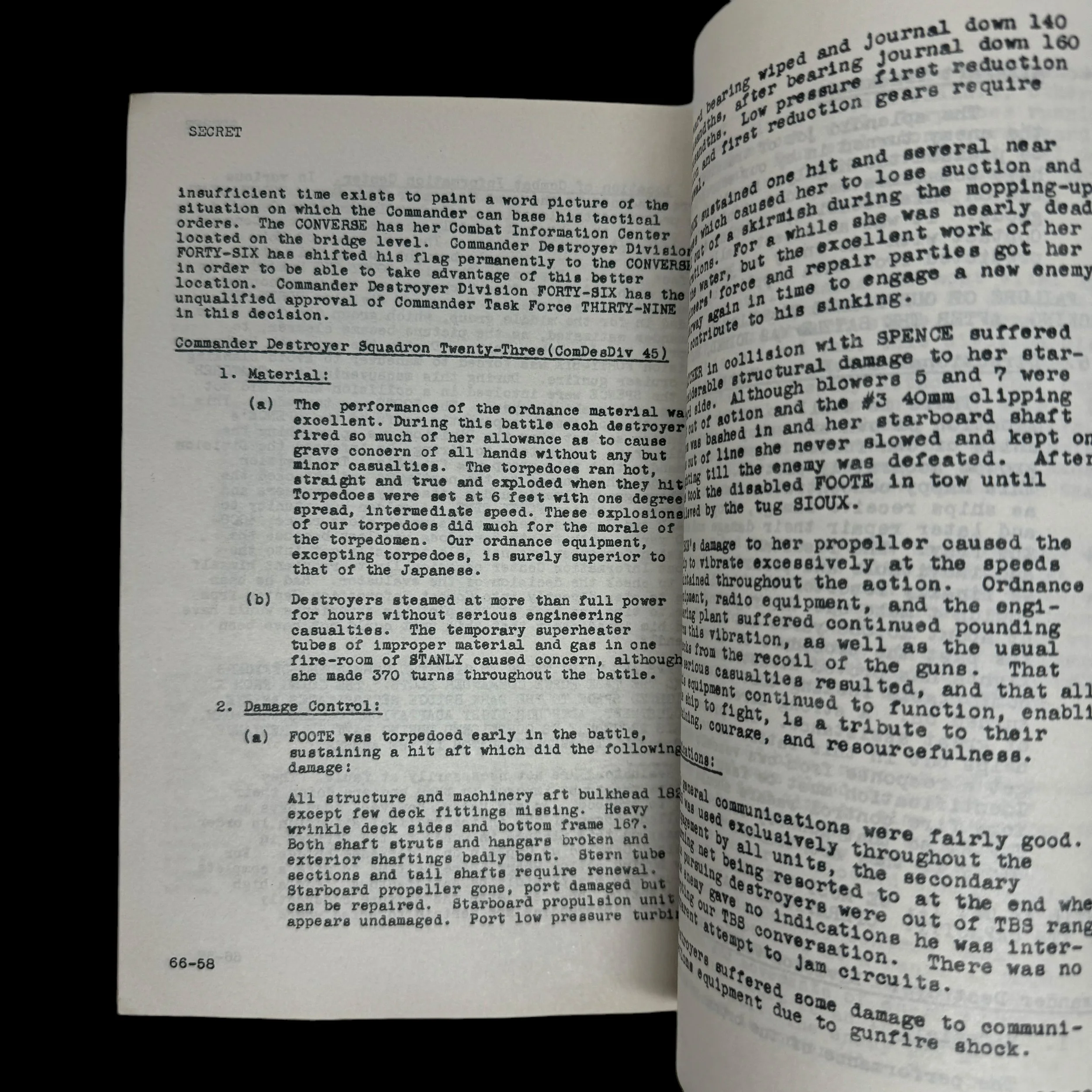
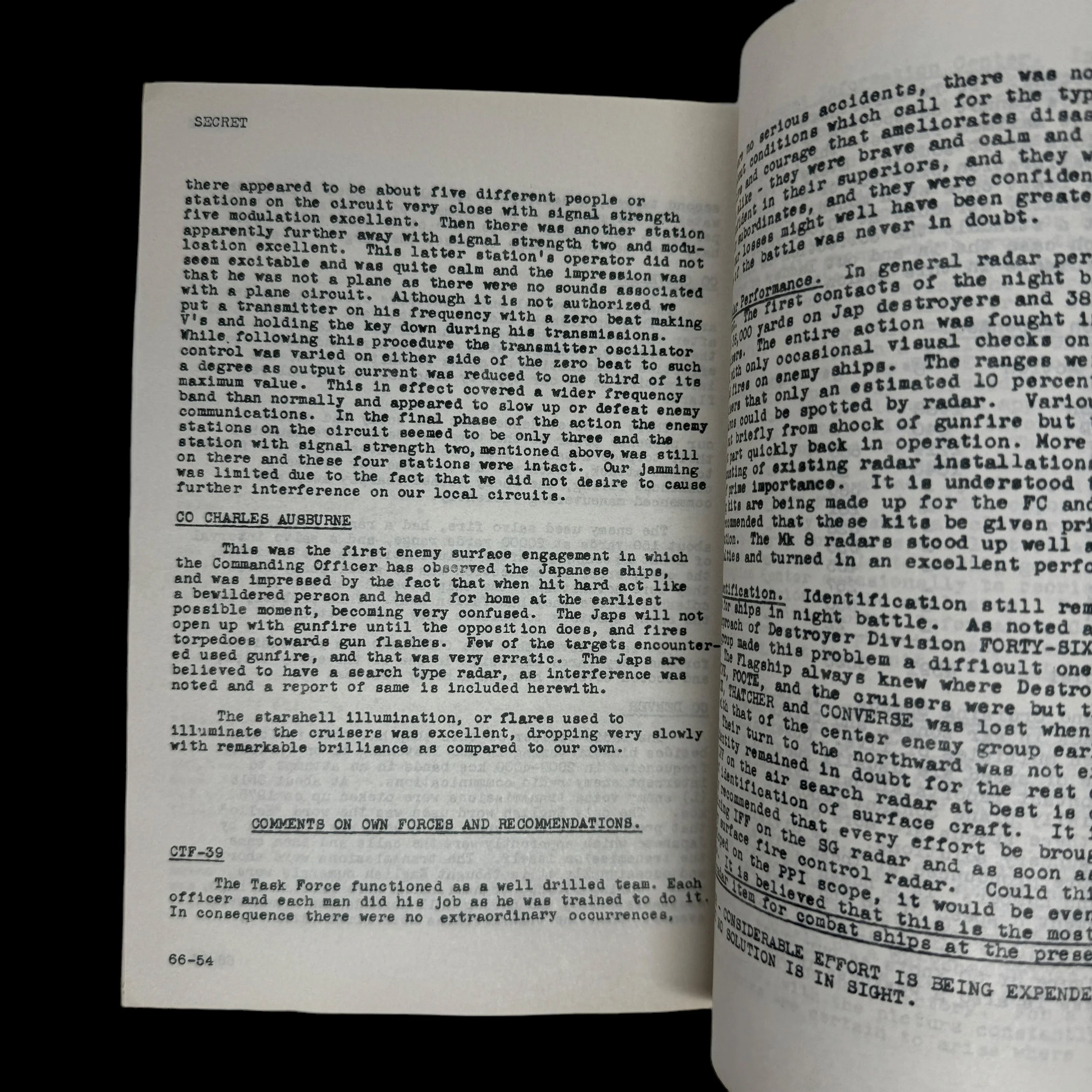

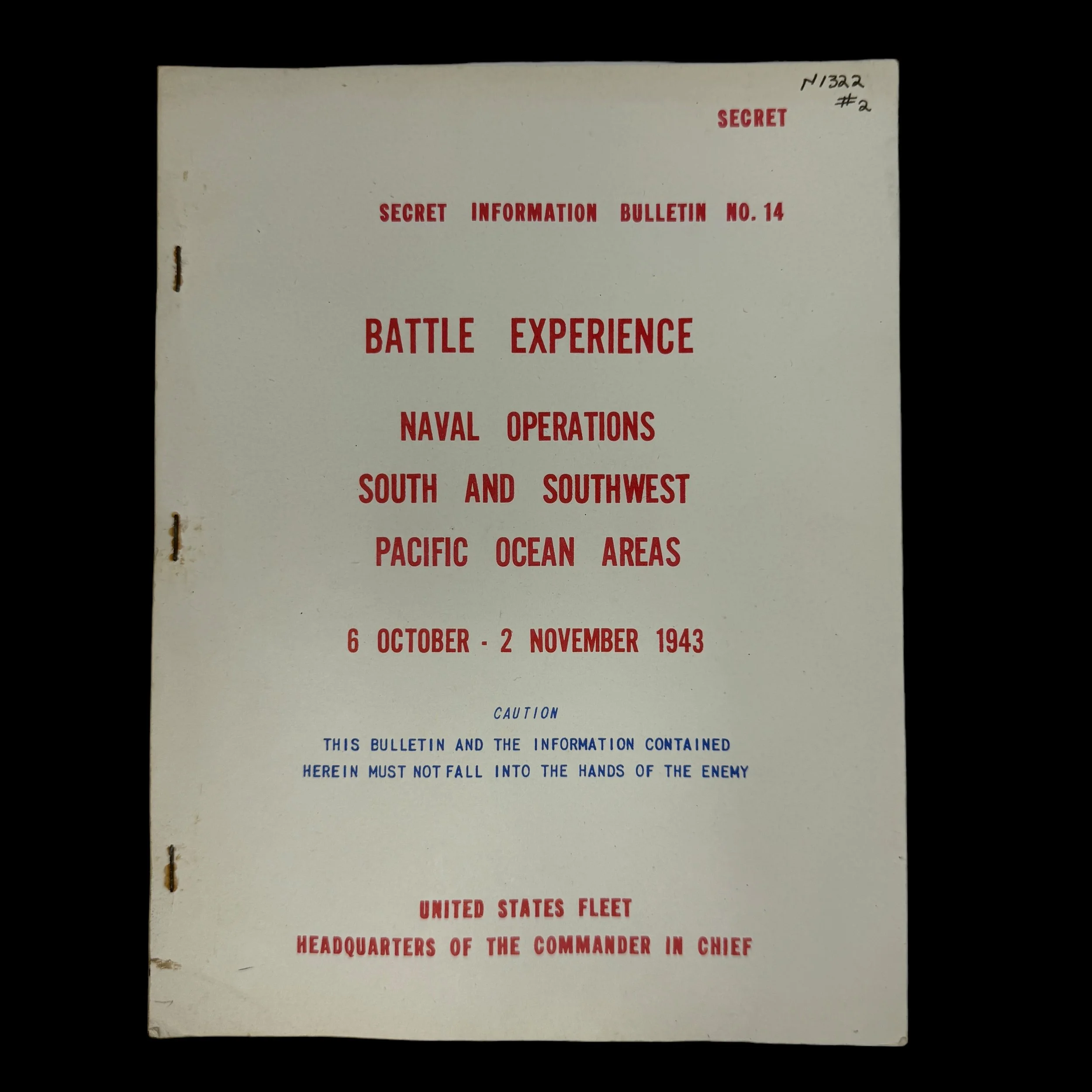
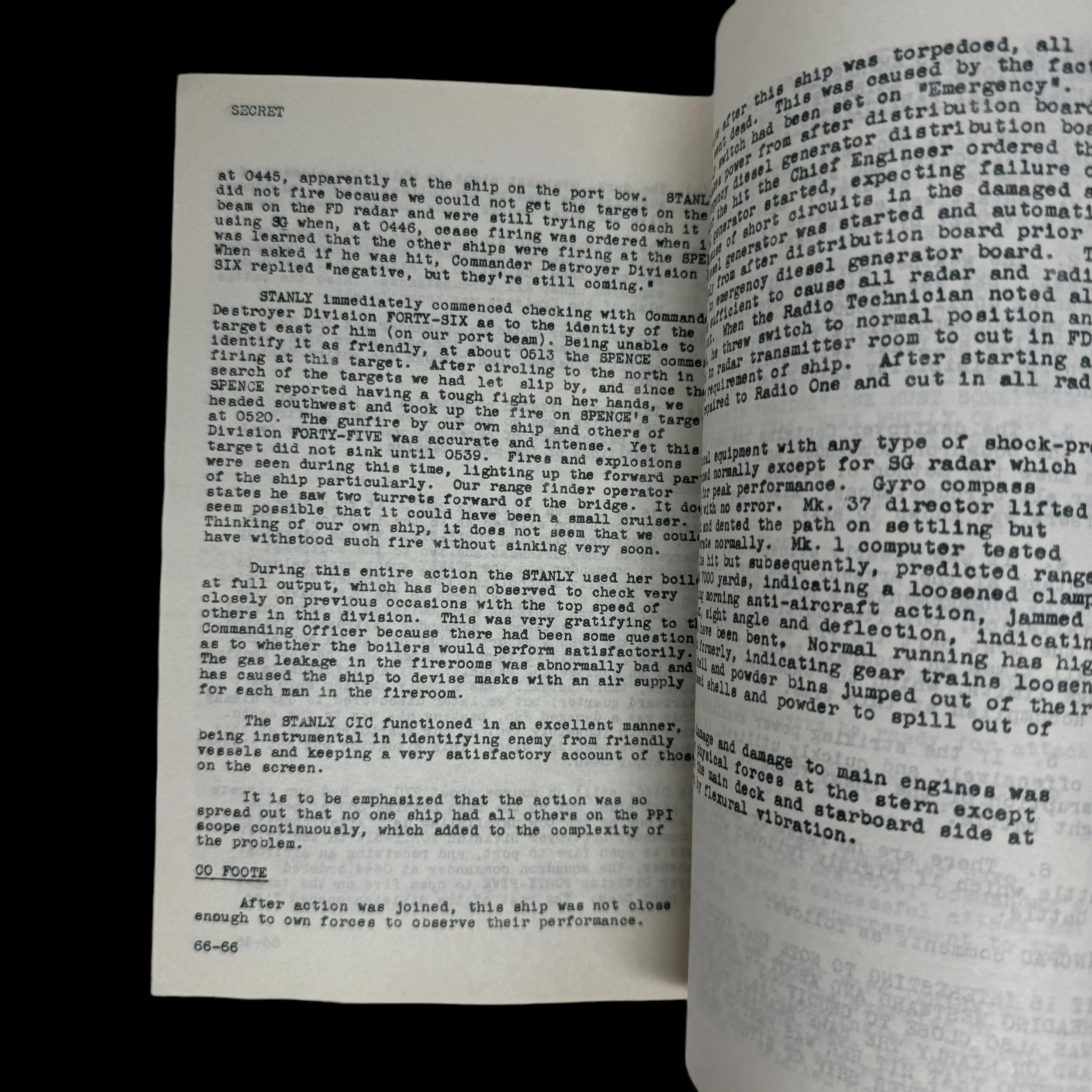
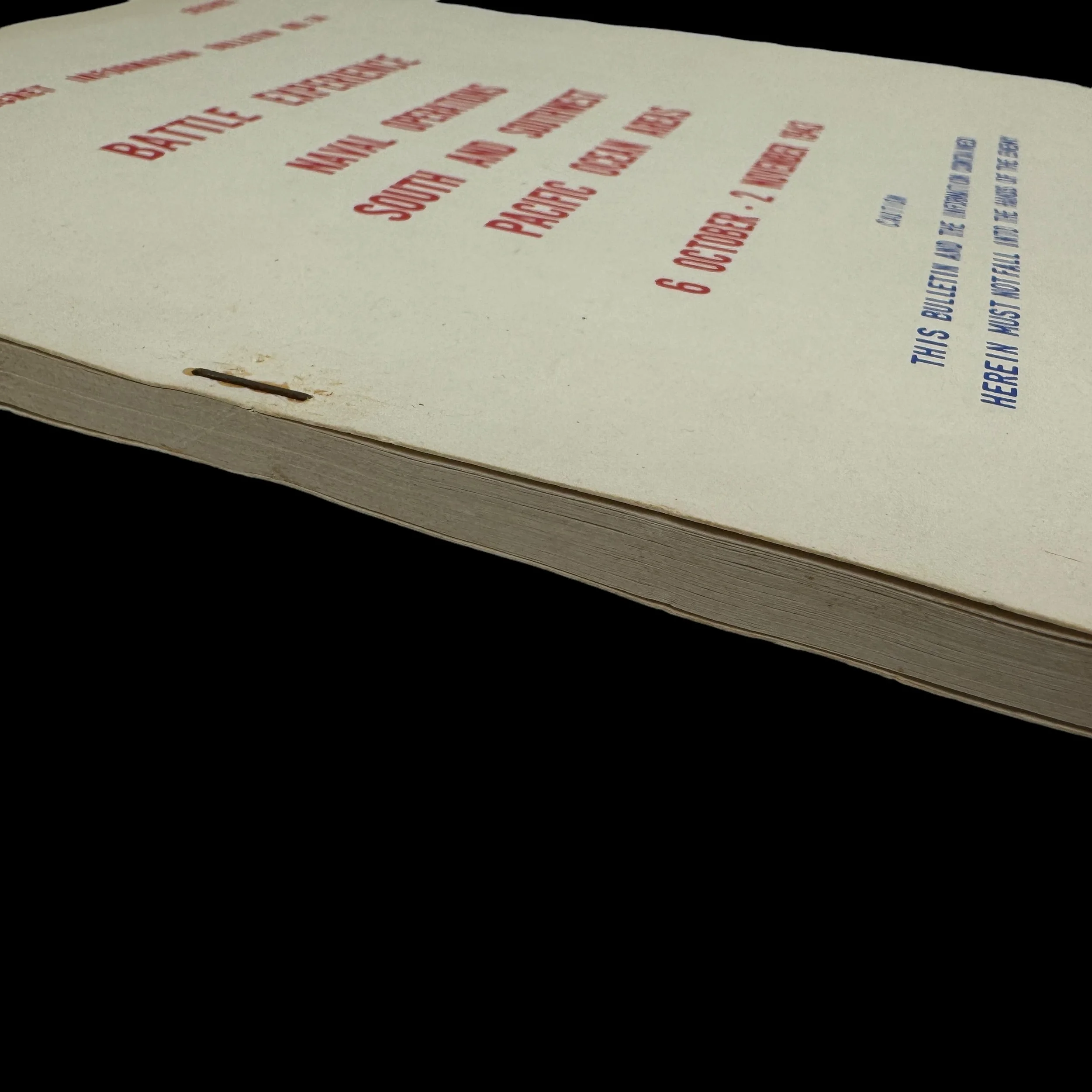
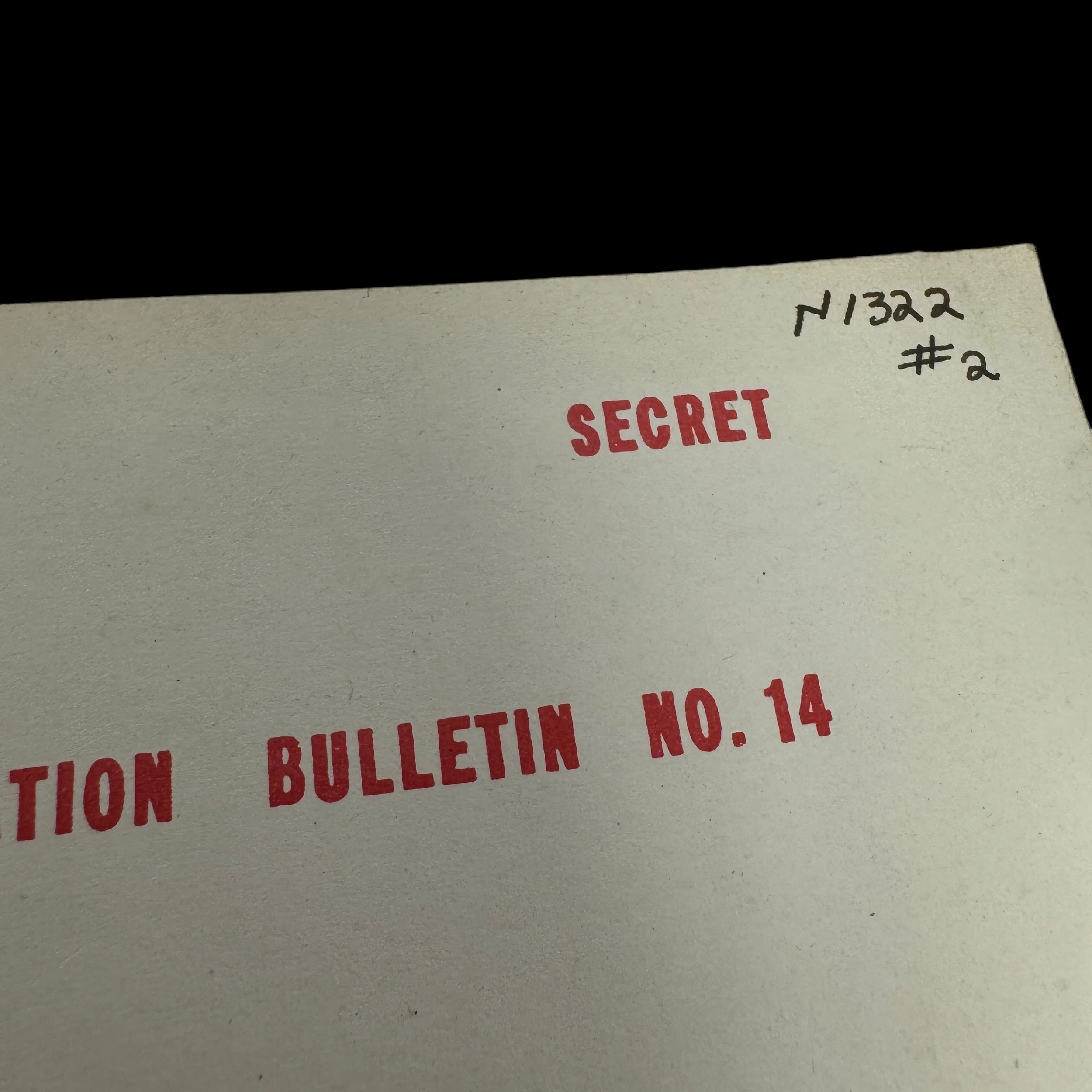
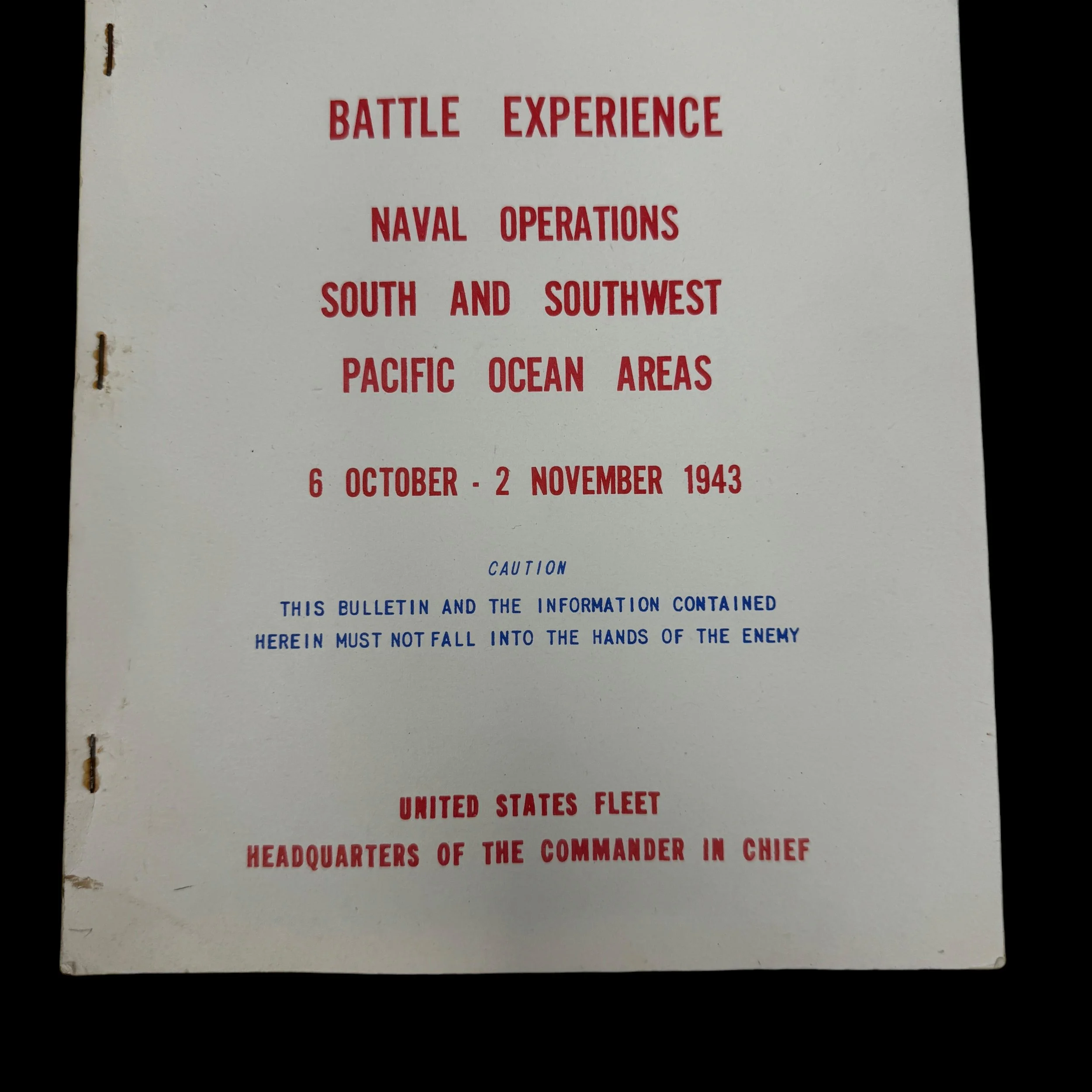
EXTREMELY RARE! WWII SECRET 1943 Naval Operations South and Southwest Pacific Ocean Areas Headquarters of the Commander in Chief Military Intelligence Report
Comes with a hand-signed C.O.A.
This extraordinarily rare, museum-grade World War II artifact is an original "SECRET" marked "Battle Experience - Informational Bulletin," meticulously produced by the United States Fleet under the Headquarters of the Commander in Chief. During WWII, the operations and strategic planning of the U.S. Navy were directed by two prominent commanders: Admiral Chester W. Nimitz, Commander in Chief of the United States Pacific Fleet (CINCPAC), and Admiral Ernest J. King, Commander in Chief of the United States Fleet (CINCUS). Their combined leadership played a pivotal role in the Allied victory.
This highly classified and intricately detailed bulletin, issued by the Headquarters of the Commander in Chief, contains secret military maps, intelligence reports, tactical movements, and a unique compilation of "battle experiences." These experiences were drawn from war diaries and battle reports submitted by various commanders and ships engaged in key operations. The bulletin was printed in extremely limited quantities, strictly for the eyes of high-ranking military officials, including Officers and Generals.
The rarity of this document is underscored by the directive on its first page, which states: "Information must not fall into enemy hands - when no longer required they shall be destroyed by burning. No report of destruction need be submitted." As a result, only a handful of these original "SECRET" "Battle Experience - Informational Bulletins" are believed to still exist.
This particular "SECRET INFORMATION BULLETIN NO. 14" is a remarkable example, titled "Battle Experience - Naval Operations South and Southwest Pacific Ocean Areas 6 October - 2 November 1943" It offers an unparalleled glimpse into the strategic operations and experiences of the United States Navy during some of the most crucial campaigns of the Pacific Theater.
Naval Operations South and Southwest Pacific Ocean Areas 6 October - 2 November 1943:
The WWII Naval Operations in the South and Southwest Pacific Ocean Areas from October 6 to November 2, 1943, were a series of coordinated Allied efforts aimed at weakening Japanese control over the region. These operations were part of the broader campaign to secure the Solomon Islands and New Guinea, pivotal points for controlling the Pacific.
During this period, the Allies, primarily the United States Navy, conducted several significant naval engagements and amphibious landings. The most notable operation was the Bougainville campaign, where Allied forces launched an amphibious assault on Bougainville Island in the Solomon Islands on November 1, 1943. This operation aimed to establish a strategic airfield on the island to support future operations in the Pacific.
The Allies also intensified their efforts to isolate Rabaul, a major Japanese stronghold in New Britain. They employed a combination of air strikes, naval bombardments, and blockade tactics to weaken Japanese forces and cut off supply lines.
These operations were marked by intense naval battles, air raids, and logistical efforts, which ultimately contributed to the weakening of Japanese defenses in the Pacific, setting the stage for further Allied advances toward Japan.